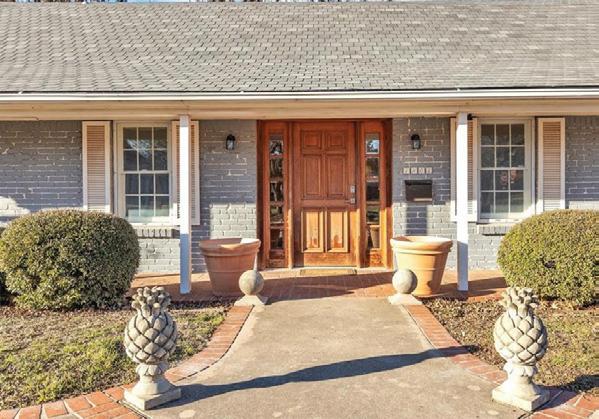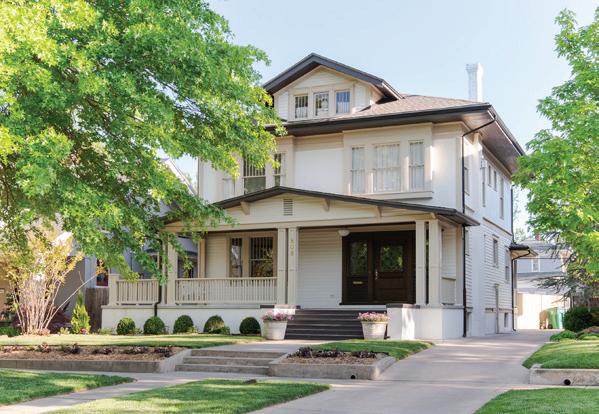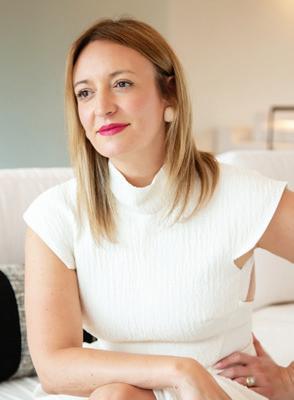









The Pilatus PC-24 is the ultimate blend of performance, luxury, and versatility. This aircraft offers agility, speed, and comfort, making it ideal for both executive and leisure travel. Its spacious, pressurized cabin accommodates 8 passengers in a refined environment designed for maximum comfort. With a range of approximately 2,000 nautical miles, the PC-24 offers unparalleled access to exclusive and remote destinations. Featuring cutting-edge avionics and advanced performance capabilities, this jet delivers a seamless fusion of efficiency, reliability, and sophistication in the skies.


jewelry you wear





Some are native-born, others enthusiastic transplants, but these eight innovative interior design professionals are channeling their expertise and Oklahoman inspirations to enhance the state’s aesthetic influence on an ever-widening stage.
STORY BY KATE FRANK AND ANDREA SCHULTZ
With a love for his work and some work on himself, artist Tyler Thrasher is thriving … even if his creations are more easily shown than described.
STORY BY MICHAEL KINNEY
Nate Roberts went from the Marines to craft brewing and the restaurant biz, and the Corps’ loss is OKC’s delicious gain through Stonecloud and The Goose.
STORY BY GREG HORTON
From “Sesame Street” to saving the planet — actor and puppeteer David Bizzaro is working to bring garment production back to Tulsa through versatile, durable designs.
STORY BY MICHAEL KINNEY

Philbrook and Gilcrease are top-tier institutions, but what about the contemporary, complex art that doesn’t fit their molds? A new platform indicates a thrilling alternative.
STORY BY MEGAN
SHEPHERD
The monumental 2025 Venice Architecture Biennale exhibition will include a taste of Tulsa, thanks to the creative duo Pfeifer Jones and their multimedia marvel.
STORY BY ANDREA SCHULTZ

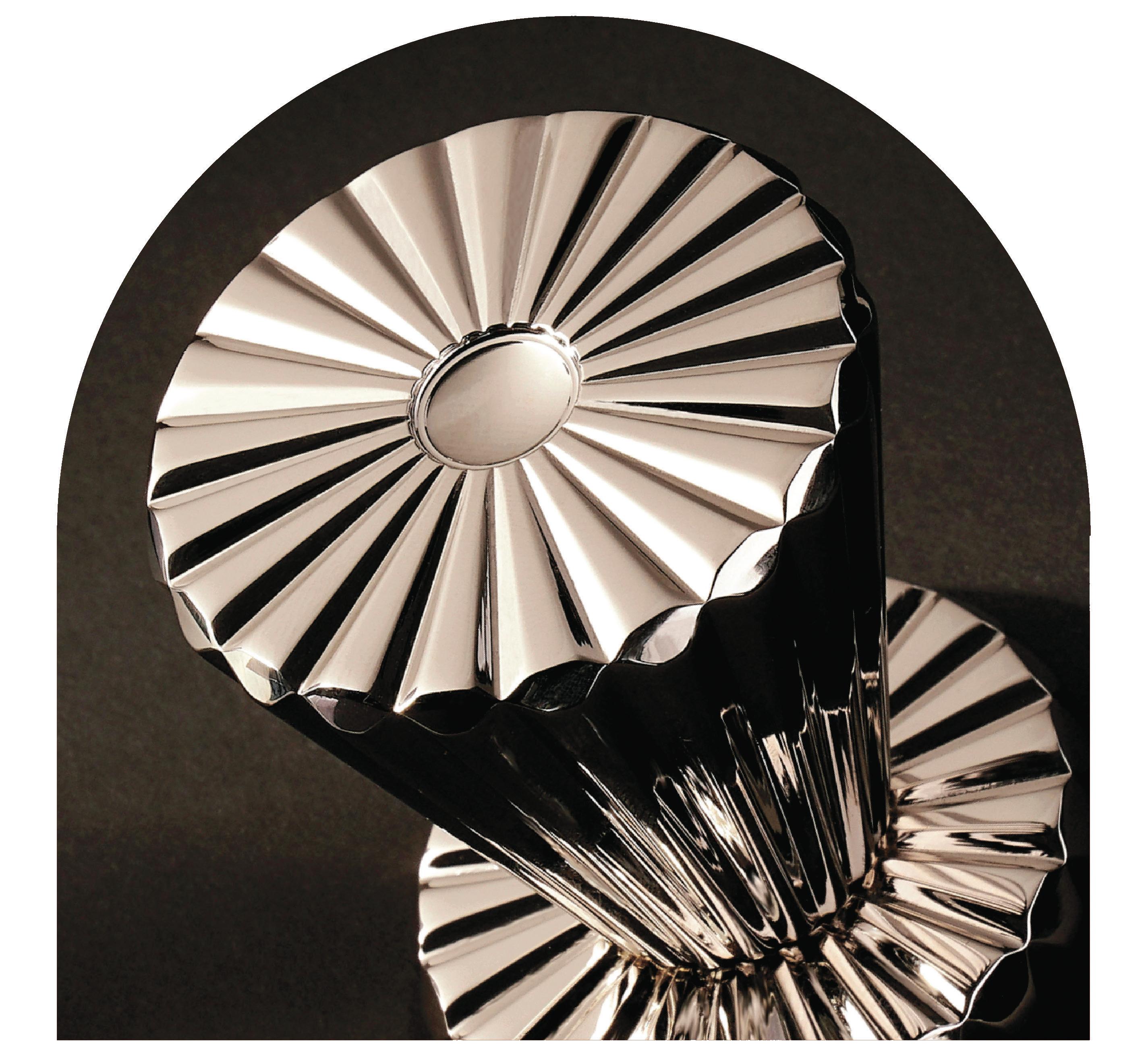









This edition of Luxiere is about the makers in Oklahoma who, though their passion, drive and exquisite talent, make our home state so much brighter, bolder and more beautiful — and in some cases bubblier — than it’s ever been before. We couldn’t be more grateful to them for sharing their gifts, and we’re thrilled to bring you their inspirational stories.
Writer Megan Shepherd recently learned what happens when two hyper-educated, Oklahoma-born creatives move to New York to pursue high-powered art careers, only find themselves back in Oklahoma thanks to the beautiful chaos life threw their way. That is Central Standard’s origin story. Founders Ashanti Chaplin and Lindsay Aveilhé gained exactly what they thought they’d lose in the move: freedom.
Emmy-winning puppeteer David Bizzaro plans to save the world from fast fashion, one hand-made garment at a time. He’s embraced a uniquely American folk art medium as his muse and foundational fabric: denim. It’s the signature fabric for his clothing label, BZRO. As you’ll learn, it’s more than a fabric. Denim is an art, a lifestyle and a subculture. You’ll find his story fascinating.
During his last conversation with former President Barack Obama on Marine One, the President asked Nate Roberts what he intended to do after his time in the military. Half-joking, Roberts said he was going to learn to brew beer — which he did, after starting his academic life as a biomedical engineering major. How did this Denver brewer end up in OKC, co-owner of Stonecloud Brewing Company, The Goose and Wells Pale Lager? Writer Greg Horton gives us the lowdown.
For a few fabulous, fleeting moments this summer, anyone entering the Palazzo Mora in Venice, Italy, would also find themselves inside a paper version of Tulsa’s Boston Avenue Methodist Church. Architects Bret Pfeifer and Aaron Jones are the duo responsible for this interactive art and architectural
experience that is part of the Venice Architecture Biennale. Writer Andrea Schultz brings us their story, and we find it mesmerizing.
Our Woman of Influence Jenny Love Meyer is responsible for keeping Love’s Travel Stops friendly, fast and full of everything a road tripper might need. As chief culture officer for the Love’s suite of companies (there are half a dozen of them), Love Meyer spends a good chunk of her time on the road, visiting as many of the 655 Love’s Travel Stops as she can. She came to the family business in her own way, though, and as she’s risen through the ranks, her passion has only grown. Writer Christine Eddington brings us her story.
We’ve also filled this edition with stories of a slew of exciting, talented interior designers, many of whom were new to us. We hope they’re new to you, too, and we’re sure you’ll love meeting them in our pages.
It’s a bold, dynamic world out there, friends, and we adore being able to bring you the best of the best.
Until next time,

STACY D. JOHNSON Publisher, Owner

CONTRIBUTORS
Each issue of Luxiere represents the combined efforts of an accomplished team of creative Oklahomans. We are pleased to share their work with you, and grateful for the time and talent each has contributed to bringing this publication into being.







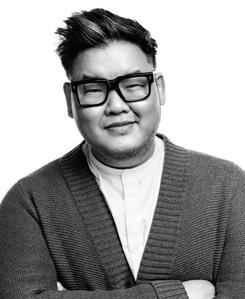







STACY D. JOHNSON Owner/Publisher/Editor in Chief
DESIGN
nvsble.studio
ON THE COVER
Artist and designer Kim Fonder's Exhibit Art Gallery in Tulsa, OK Hanging artworks by Cydney Parkes Sculpture by Morgan Robinson Models: Will Schloss and Jamie Schloss Photographer: Tony Li
CORPORATE OFFICE
2123 N Classen Blvd Oklahoma City, OK 73106 www.luxiere.co
Luxiere Oklahoma is published bimonthly, direct-mailed to a curated readership and distributed at select retail locations free of charge for individual use. To request copies, please contact the publisher. For more information, visit www.luxiere.co.
Email: stacy@ luxiere.co Phone: 405.808.1332
Advertising claims and the views expressed in this magazine by writers do not necessarily represent those of Luxiere Magazine. No responsibility is assumed for unsolicited materials. Originals of manuscripts, photographs, artwork or other materials should not be sent to Luxiere Magazine unless specifically requested to do so in writing. Luxiere Magazine is not responsible for the return of any manuscripts, photographs, artwork or other materials submitted. Luxiere Magazine shall have no liability for errors, omissions or inadequacies in the information contained herein or for interpretations thereof. Luxiere Magazine shall have no liability
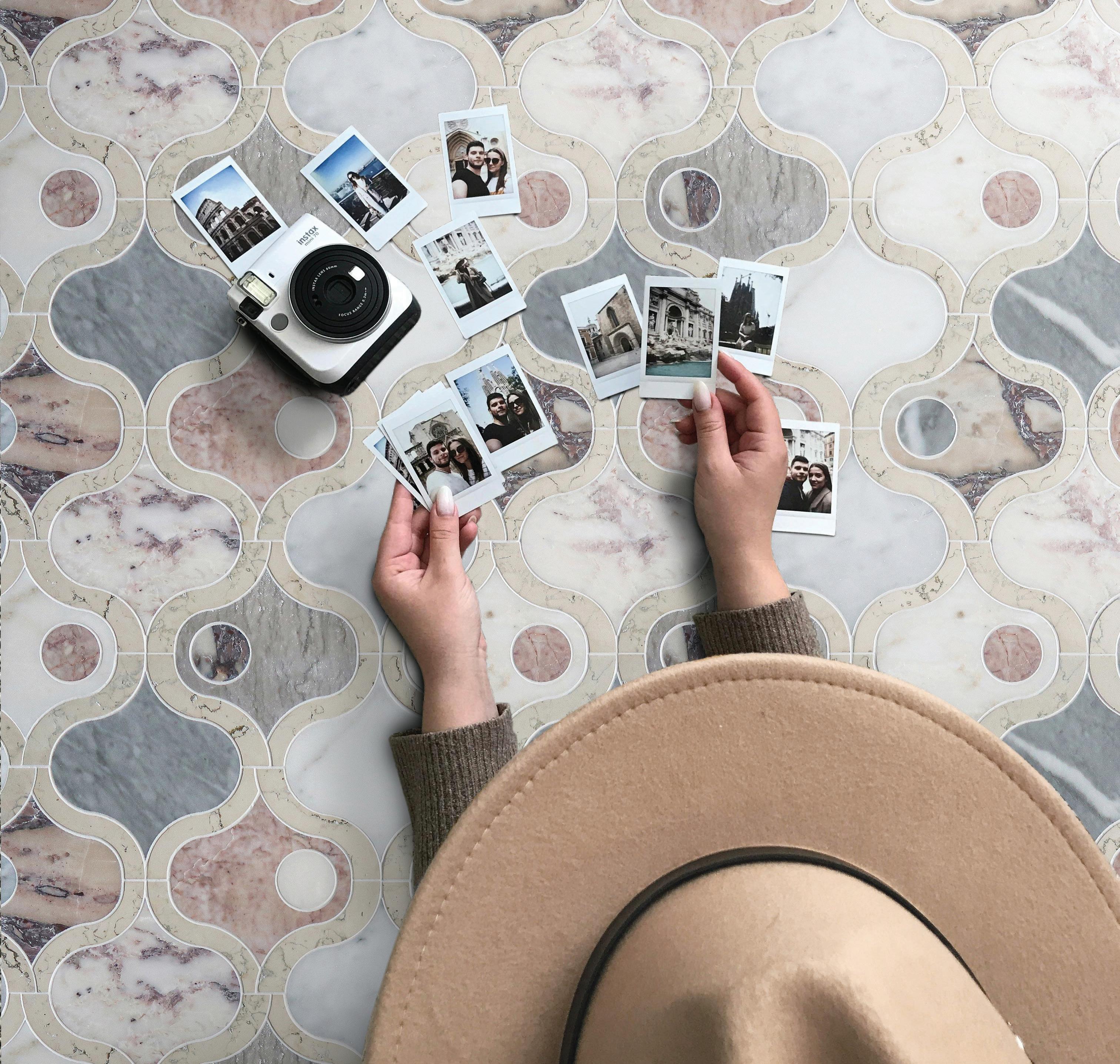








BY MICHAEL KINNEY
Tyler Thrasher has been fascinated with science all his life. Growing up in Tulsa, he described himself as a really nerdy and curious kid with a vivid imagination—although for much of his youth, Thrasher never thought those attributes would come in handy, much less become the foundation of a career. He just assumed he would drift away from his childhood interests, like many adults do.
That never really happened. The same curiosity and nerdy passion for the unknown led Thrasher to become one of the most distinctive artists in Oklahoma, as he refuses to just be part of the crowd and accept the status quo. The 31-year-old artist, author, entrepreneur and teacher is led by an undying search for answers, which comes to the forefront in his work.
“I am very big on asking questions, questioning the status quo, interrogating the rules of life,” Thrasher says. “Like, it is hard for me to just blindly accept what’s been given to me, and there’s a lot of liberation in that. I just hope that I have kids that when they grow up, they feel the freedom and the right to ask questions and to press further if something is presented to them without any evidence. I hope they feel the freedom to explore and ask questions in their life.”
Thrasher’s inquisitiveness has led him down many different paths while never quenching his intense curiosity. He’s written three books, sells handmade plushie toys and puts out a newsletter.
“I think I’ve always had a creative mind … I was always the really nerdy, curious kid and just had a very vivid imagination growing up,” Thrasher says. “I went to high school, explored art, visual art; took some extensive chemistry classes, fell in love with chemistry and then spent my years after high school wondering, ‘How can I combine art and chemistry?’ That turned into a lot of self-exploratory experiments and things like that.”
Thrasher said he got into caving while in college and spent a lot of time underground around minerals. Then while in a crystal shop he saw a display of synthetic crystals and decided he wanted to try growing his own.
“Then one day I was like, ‘Well, what if I put a dead bug in the jar with the crystals and it turned into a crystallized insect?” Thrasher recounted. “It was just a ‘f-around and find out’ sort of thing, and I pulled out this crystallized insect. I absolutely freaked out and then shared that on the internet and it took off.”
With the encouragement of his wife Molly, Thrasher departed from a career path in computer animation and bet on himself and his art. He held his first art show in 2015 and hasn’t looked back since.
Thrasher said his work explores the idea of combining molecular geometry and crystalline structures with organic surfaces as an homage to ancient and esoteric alchemy. Describing his art is almost as difficult as deciphering the science behind it—luckily for him, he has social media to help. His Instagram page (@TylerThrasherart), which has just shy of 500,000 followers, details current and past projects, while giving him a platform to speak on social issues as well.
For visitors, it gives those who have an interest in his art a foundation for the method to his madness, so to speak.
“I just pull up my Instagram,” Thrasher says with a laugh. “I get this a lot: People are like, ‘What do you do?’ I’m like, ‘I’m an artist and a citizen scientist.’ ‘Okay, what does that mean?’ I’m like, ‘Oh Lord, if I tell them I have to show them.’ It’s hard for a lot of people to visualize synthetic opal or crystallized insects. So, I find myself like, ‘Well, let me just show you.’ And then from there I kind of get the same reaction. People are like, ‘Oh, holy s**t.’”
Thrasher is currently working on opalized specimens—encasing dead flowers, dried flowers, dead insects, in synthetic opal to make light-refracting, color-changing crystals surrounding the organic material.


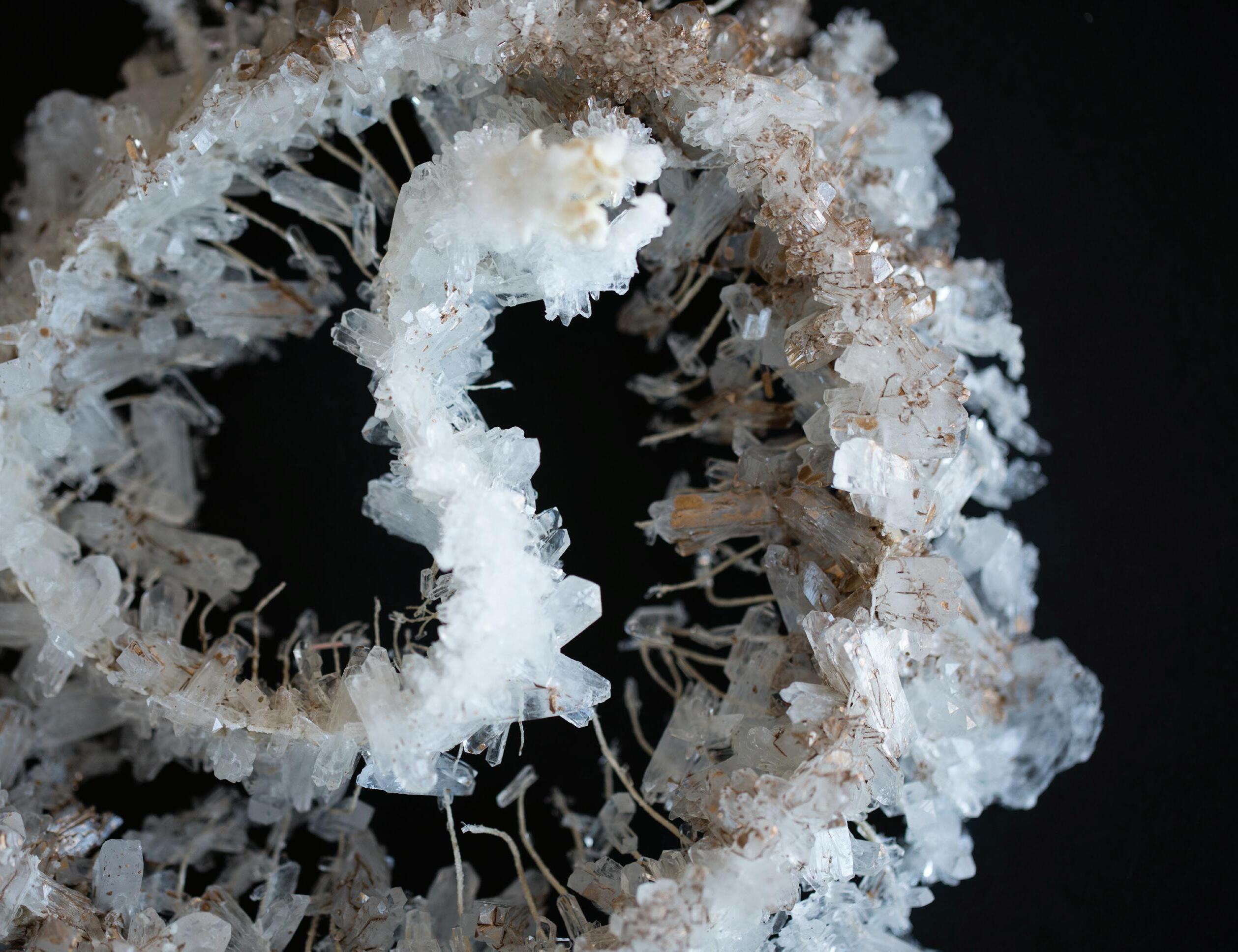
“I think I’ve always had a creative mind … I fell in love with chemistry and then spent my years after high school wondering, ‘How can I combine art and chemistry?’”
TYLER THRASHER




“That, to me, is a completely novel, fun idea that I think is really hard for people to picture until you show them,” Thrasher says. “Even then, they’re not quite sure if they get it. But I love trying to explain it to people.”
While it may seem like Thrasher has been living his best life, it has not been all sunshine and rainbows. He found he couldn’t enjoy his successes and victories for a long time because of a few in his circle. He was surrounded by people who didn’t have his outlook on life and lived miserable lives.
“That’s just kind of what I was seeing. So when things for me started going the route where I felt, ‘This is genuine, this is true, this feels aligned with who I am and my dreams are coming true,’ at first, I had a lot of guilt,” Thrasher says. “What did I do to deserve this? Why is this working for me but not for these people? And can someone come and take it all away from me at any moment? I got a lot of that from friends and family. I couldn’t tell them things were going good; I started becoming sensitive to the people that would just roll their eyes.”
Despite all he had done, Thrasher was not happy with his career. So he went out and got some help.
“Those were my fears and anxieties and a lot of guilt, and it took a lot of therapy and still does,” he says. “It took a lot for me to be like it’s OK for a person of color to succeed and to do good, and to have life work out for them despite what the narrative tells us.”
Thrasher didn’t cut the negative people out of his life, but he did choose to share fewer of his success stories with them. His next step was to let more people into his circle who he knew would be a positive influence on him.
“I spend a lot of time talking to successful Black women. They have a huge hill to climb, and when I see them just own their s**t outright, I’m like, ‘If they can, maybe I can,’” Thrasher says. “Even if I don’t feel like I can, I will just fake it until I make it. I’ll just fake it until I finally feel like I deserve a good thing.”
Thrasher said currently his mentality is 50/50 in terms of how much he is faking the confidence he exudes. Much like one of his science and art projects, he plans to keep working on himself until he gets it just right.
“I say it’s a lot easier now. I have a whole team and they’re very proud of me, very supportive. If I succeed, they succeed,” Thrasher says. “When we have really big kick-ass art drops, they all get a piece. If you’re in my circle, you’re going to move with me and my team. I can’t treat myself like s**t because I’m going to treat them like s**t. And if I want them to feel good and proud of what they’re doing, then I have to feel good and proud about what I’m doing.
“I’m making progress.”
But Thrasher isn’t doing it just for himself. He wants to set an example for his sons Nova and Luca so that whatever stumbling blocks he experienced, they will have a road map to maneuver through them.
“I hope I’m living a life where my kids can see someone following their ideas, being authentic and knowing that you’re allowed to do that,” Thrasher says. “I hope that the things that I struggle to accept and be proud of, I’m showing my kids and giving them a head start [so] that they can very easily believe they deserve good things and that they pursue their ideas. I think my wife and I are doing an amazing job with our boys, and I hope they grow up feeling pretty badass that they have a dad who does what he does for a job and they can do whatever they want.” •
Trained and taught under Joseph Pilates protégé, Romana Kryzanowska, Carrie Kenneally is Romana Pilates International® Certified for 20+ years.

CARRIE KENNEALLY Owner/Instructor

Interior Design Studio & Bespoke Furniture Collection
At AMATOYA, we are dedicated to transforming your vision into exceptional interiors through a seamless blend of creativity, craftsmanship, and storytelling. With our extensive expertise, we collaborate with you to understand your unique vision, delivering sophisticated, versatile, and enduring designs that leave a lasting impression.
Our interior design services are complemented by a refined collection of custom bespoke furniture and branded pieces that embody innovation, authenticity, and artistry. Each piece is meticulously handcrafted, merging timeless elegance with rigorous durability to enhance experiential spaces.
Exceptional Interiors. Inspired Design. Unparalleled Craftsmanship.





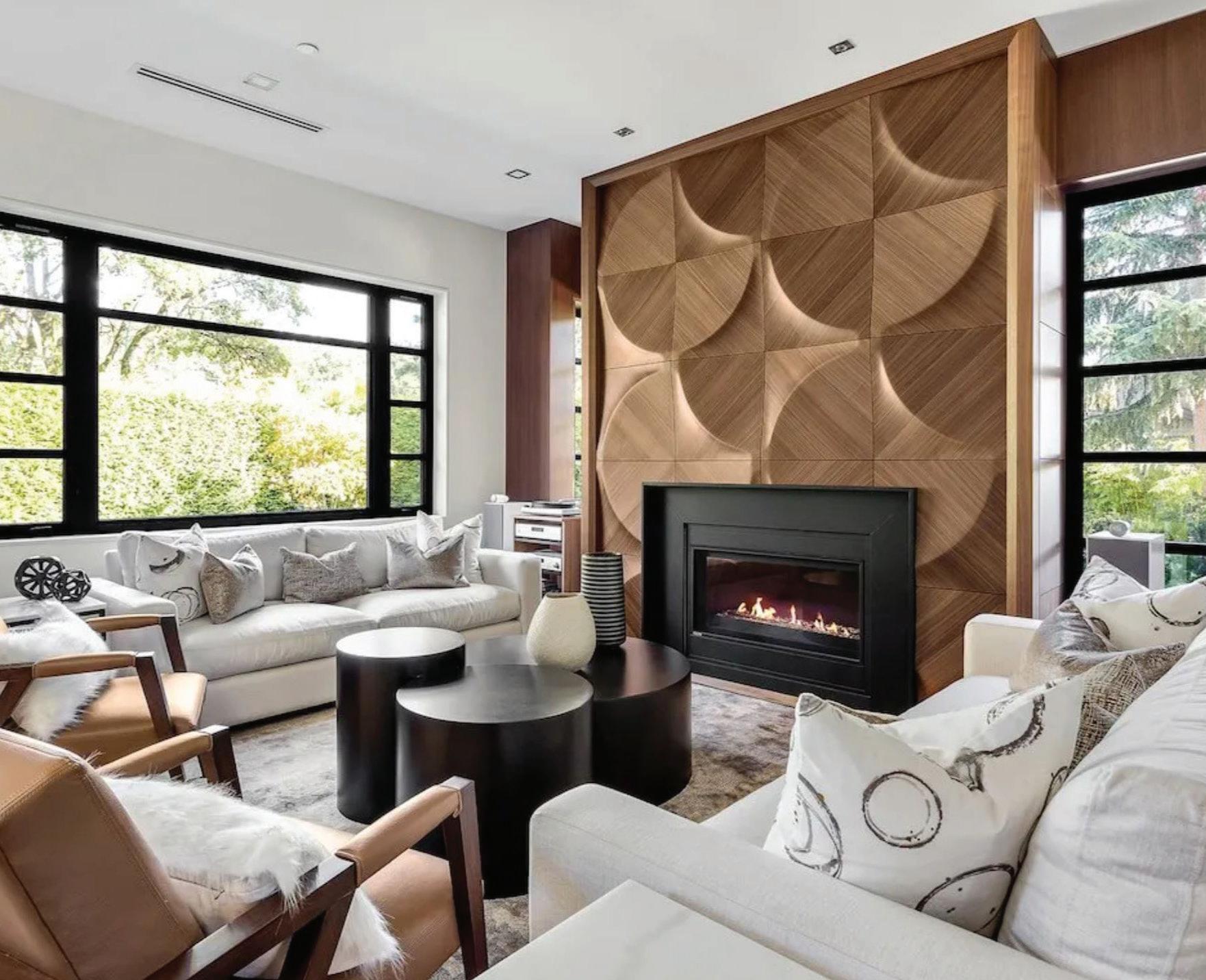



BY CHRISTINE EDDINGTON
Any road tripper worth her salt knows to keep one eye on the horizon at all times, looking out for that glowing beacon: the tall, gold sign with hearts on it. Whether we’ll admit it or not, most of us have our go-to “road food” that we head for when we walk into a Love’s — even if it’s a guilty pleasure. Funyuns and a Coke Zero, anyone? Jenny Love Meyer, the company’s Executive Vice President and Chief Culture Officer, is no exception. When she pops into one of the 655 Love’s Country Store & Travel Stops scattered across 42 states, her beverage of choice is a bottle of water or a medium-sized Brazilian coffee. Her go-to snack is the yogurt trail mix; if it’s lunchtime, it’s a chicken taco with Tabasco. Worth knowing: Tacos are made fresh, in-house, every day and they’re a huge hit. “We make it all: tacos and hot sandwiches, and then we’re rolling out new menu items all the time. Decades ago, we started cutting fresh fruit and then put it in fruit cups, like the grocery stores do, and then it kind of evolved,” she says. The tacos came from a Texas Love’s divisional. “They started prepping and making tacos at one of his locations, and now we’ve got hundreds of fresh kitchens across the country.”
Perhaps Love Meyer was fated to join the family business, but she did it in her own way and not immediately. After graduating from Colorado College in 1992, she — like many new grads — didn’t know what she wanted to do, but thought working in restaurants might be fun. “I had some friends in Washington, D.C., and they were like, ‘Why don’t you just move out here?’ So I did.” She got a job at a hotel and worked her way into the restaurant side of the hospitality industry. “I liked it, but you know, Washington is kind of a nomadic city. My friends moved away, and so I ended up moving back to Oklahoma City.”
That’s when her savvy dad, the late great Tom Love, casually mentioned that the company had a restaurant concept it was launching out in western Oklahoma, and wondered if she’d like to help. “The concept was essentially a Western twist on a full-service restaurant. This was out at I-40 and Exit 7. I remember that because I was traveling back and forth frequently,” she says.
Named “Cowboys,” the restaurant had a bakery section with fresh baked goods in addition to the restaurant itself. Not a bad idea, per se, but also not one that survived. “I will say, in transparency, that sometimes with innovation, things don’t work out,” Love Meyer says. “The good thing about our family is that we tend to pitch in on things.” In this case, she mused, the family may have pitched in too much. Literally too many cooks in the kitchen. As they are wont to do, Cowboys rode off into the sunset, but by then Love Meyer had been lassoed by Love’s and decided to stick around.
Love Meyer’s team handles communications, culture and events for the Love’s suite of companies, which employ more than 40,000 people. She loves her job. “One thing that’s super cool about my job is there’s really no day that’s alike when I’m out in stores,” she says. Those in-the-field days start early — around 6 a.m. — and don’t stop until after dinner with members of the Love’s team.
Things are a little more predictable when she’s at her Oklahoma City office. She toggles between meetings and “kind of observing and guiding behavior, as we encourage — and really expect — our people to live our culture. Our culture really is the Love’s differentiator,” she says. Love Meyer’s dad, who founded the company along with her mom, Judy, believed wholeheartedly in living — and conducting business — with integrity and honesty.
Shane Wharton, Love’s president, says it this way: “Tom always listened and was sincerely interested in knowing the stories of employees and customers. He wanted to hear their thoughts, ideas and hopes for them, their families and the company. He credited the company’s success to the people who worked for us. He could relate to all employees, but had a soft spot for those on the front line at stores. In many respects, he was an ordinary person who built an extraordinary business alongside his wife Judy and his family, who he loved deeply.” Love spent a good chunk of his time touring stores, checking in, talking with employees and learning from them what was working and what was not. Love Meyer began taking on more of the “culture tours” duties a number of years ago.
Sadly, the elder Loves are no longer with us. Tom, a forwardthinking entrepreneurial genius by any standard, passed away in 2023. Judy, a joyful powerhouse and serious philanthropist in her own right, followed in 2024. “It’s been a transition. We’re lucky that we’ve got a close family,” Love Meyer says. “It’s hard. You kind of don’t think it’s going to happen, even though it’s the cycle of life, and then it starts to. And it’s hard.”
The Love family’s corporate success story is eclipsed only by its commitment to philanthropy. As a company and as individual team members, giving back is an intrinsic value. One percent of net profits is donated annually, with 34% going to youth and education; 25% for health and human services; 16% going to civic and community causes and 25% going to other charities and initiatives. A slew of corporate employees, more than 600, donate their time to good causes. In 2023, that meant 1,400 volunteer hours were contributed. Each of the 88 districts in the field is allocated $5,000 per year to donate to non-profits in the areas, with lots of input from employees. Similarly, each new store donates $5,000 to the local community during a ribbon-cutting ceremony. By the end of 2024, approximately $550,000 was donated in these ways.
Love Meyer and her siblings Frank and Greg Love now helm the company, with plenty of help from the top-tier team of executives they’ve assembled. Members of the third generation of Love family members, dubbed ‘G-3’ by Love Meyer et al., have begun making their way into the family business, ensuring that while times may change the family-driven, people-first nature of the Love’s suite of companies is in safe hands.
The Love family’s success story is so entrenched in our state’s history, it’s become part of our lore. A point of pride for all in Oklahoma. For a young Tom and Judy Love, though, the company began as many great American businesses do: as a way to feed the couple’s growing family. Back in 1964, the then-named Musket Corporation took a lease on an abandoned service station in Watonga. Eight years later, there were 40 stores, scattered throughout western Oklahoma. The couple parlayed this early iteration of Love’s into much more, adding goods and services for professional drivers and travelers-by-road. In 2022, Forbes estimated Love’s Travel Stops & Country Stores to be worth $9.7 billion; estimated 2024 revenue was $24 billion. •

THE LUXIERE LIST
(IN NO PARTICULAR ORDER)
The fresh fruit you see displayed in every Love’s is cut fresh daily, on the premises. Hot food is made in-house, too.
Love’s longest-serving employee is Harold Wells. He’s been with the company for 52 years, starting at the first service station in Watonga. Today, he works at Love’s corporate headquarters in Oklahoma City as a retail accounting systems manager.
Love Meyer is a past board member of the American Red Cross, Teach for America, the Foundation for Oklahoma City Public Schools and the Arthritis Foundation. She was also past chairperson of the Children’s Miracle Network Council, past co-chair of United Way Women’s Leadership Society and a Leadership Oklahoma City alum, Class of XVII.
Love’s has 165 EV chargers, with plans to add 80 more to 20 locations in 2025.
Jenny has been recognized with a Byliner Award from the Association of Women in Communications, Oklahoma City Chapter; an Oklahoma City University Societies award in recognition of her work with Children’s Miracle Network Hospitals; Leadership OKC’s Paragon Award for outstanding volunteer work; and a Women in Leadership award from Langston University.
Currently, Jenny serves on the Greater Oklahoma City Chamber of Commerce board of directors, the Oklahoma City Community Foundation board as a trustee, the Children’s Hospital Foundation board of trustees and the board of governors for Children’s Miracle Network Hospitals. She spearheads the annual Love’s fundraising campaign for Children’s Miracle Network Hospitals. Under her leadership, in the last 20 years, Love’s has raised more than $40 million for Children’s Miracle Network Hospitals across the nation. The largest part is raised during a five-week campaign during peak travel stop season wherein customers and employees donate.
The amount of water Love’s sells per year would fill 10 Olympicsized swimming pools and, if arranged end to end, the items Love’s sells off the roller grill per year would extend from Orlando, Florida, to Tacoma, Washington.

Most of us know Love’s Country Stores & Travel Stops, but there are five companies under the Love’s corporate umbrella.
Gemini is a motor transport company with a fleet of more than 1,050 trucks. Its drivers transport fuel and other products to Love’s locations nationwide. They also transport ethanol to terminals throughout the United States. Gemini proudly holds the distinction of being one of the industry’s safest transport companies.
Musket Corporation is a fuel trading and procurement company, specializing in commodity supply, trading and logistics across North America. It handles billions of gallons of crude oil, NGL, natural gas, petroleum products, renewable fuels and DEF each year.
Speedco, founded more than 25 years ago, serves professional drivers in its more than 400 locations. It provides comprehensive lube, tire and light mechanical services and, together with Love’s, makes up the largest nationwide network of oil change and preventative maintenance providers.
Trillium specializes in alternative fueling solutions: fuel supply, design, installation and operation for offerings including CNG, hydrogen, EV charging infrastructure, solar installation and onsite electricity generation. Between them, Love’s and Trillium own 65 public-access CNG stations.
Love’s Financial offers services including freight factoring (a financing method in which a trucking company sells its accounts receivable at a discount to a third-party funding source to increase cash flow), a universal billing program and Radio Frequency Identification (RFID).
Woman of Influence is presented by First National Bank of Oklahoma





Whether you are building your dream home, buying a first home or just have questions about what to do next, you can trust First National Bank of Oklahoma. We have the mortgage products and expert staff you desire. Ask for Lisa Chadwick , Josh Adel, or Kris Menz.


BY GREG HORTON
Shannon Rich splits her time between Bentonville, Arkansas, and her hometown of Oklahoma City. The arrangement is so she can spend time with her stepdaughter Mia and husband Kelly Kerr, who is an attorney based in Grove, Oklahoma. While in Bentonville — Thursday through Sunday, typically — she likes to remind people that Sam Walton is from Oklahoma. She’s not just taunting; she’s working. As the president and CEO of the Oklahoma Hall of Fame, a position she has held for almost 20 years, Rich is much like the state’s chief evangelist for how great Oklahoma’s people are.
“I think of myself as an ambassador for the state, and I really do believe we generate some of the best, brightest, most talented people in the country, and I like reminding the good people of Arkansas of that,” Rich says.

Listening to her tell her story is like listening to encounters with a who’s who of business and philanthropic luminaries: John Q. Hammons, Clay Bennett, Kari Watkins, E.K. Gaylord II and a roll call of Hall of Fame board members who constitute 63 of the most influential people in our state. It wasn’t going to go this way, not early on. Rich said her plan after graduating Yukon High School in 1988 was “peace, out.”
“My older brother had gone to college, so I saw it as a viable option,” she says, “so I headed to Oklahoma State to study radio and television journalism.”
Meeting Rich face to face, it’s immediately apparent why broadcast journalism would have been a great call: exceptionally bright, a quick thinker, buzzing with what feels like a low-frequency energy when you’re around her, a gift for communicating clearly and a smile that is the textbook megawatt trope — she would have been great on television. But journalism wasn’t to be the thing, and neither was marketing. She finished her program at Oklahoma City University, but before that, she’d started working as a sales manager in a hotel. It was a job that would shape everything that would follow.
She would trade up to the new Renaissance Hotel after a brief stint with Hilton not long after college. She was young for the job — 23 or 24 — when she decided to apply for the Renaissance gig, but one thing that is decidedly true about Rich is that when you interact with her, you walk away with a comfortable level of certainty that she can handle any task assigned. She got the job, and worked her way up to Hammons’ advance team, helping to open hotels.
The Renaissance was the first full-service hotel in the city since The Waterford was built, but Rich remembers being downtown and reckoning with what OKC really was in 2000. “My team had to work hard to sell OKC back then,” she says. “We were betting on what was coming, not what was. Bricktown was an idea more than a reality. The ballpark opened in 1998, but there wasn’t a lot else to support it.”
Part of the struggle was watching potential clients say no because of easily fixable issues like alcohol laws and catering issues, but also serious were the lack of amenities and low density in downtown. It’s hard to picture it for those who have only known the area post-MAPS, but it was grim. The frustration started her thinking about how policy changes could make it easier to sell OKC, so politics was suddenly on the board as an option.
Her last year with Hammons was 2004, and that was the year of Tom Coburn vs. Brad Carson for a U.S. Senate seat. “I don’t care what side of the aisle you were on, it was ugly,” Rich says. “There were weekly spats on ‘Meet the Press,’ and national news stories about the race, the things said, all of it — and it was just ugly.”
Clay Bennett reached out with a proposal. He wanted her to take the Hall of Fame job, but she was thinking politics. “Clay pointed out that I needed more experience, and that the Hall of Fame would give me access to a statewide rolodex that was a literal who’s who of Oklahoma politics, non-profits, philanthropists, CEOs, etc. I didn’t really want the job, but I wanted to impress Clay.”
She took the job — Nov. 1, 2006 — reluctantly, but now she loves the role. It was the Coburn-Carson race that helped her reframe the issue of politics vs. nonprofit.
“I was headed for a divorce at the time,” she says. “I was married at 23, and we made it 20 years, but I could tell it was nearly over. I’d seen up close the personal toll a campaign can take, and I didn’t trust how I’d be portrayed by the media — woman, divorce, works too much — so I realized that I could work for the most 63 influential people in the state or put my name on a ballot.”




Not long after taking the job, she got to see firsthand how the board and alumni of the Hall of Fame affected policy via scholarships, advocacy, networks, favors for friends and supporting nonprofits. But she also saw the changes that needed to happen.
“There are only six states that have a Hall of Fame to honor not just entrepreneurs or athletes, but to honor its best ‘sons and daughters,’ and I’m proud that Oklahoma is one of them.”
SHANNON RICH
“The Hall of Fame was started in 1927 to create educational opportunities focused on Oklahoma, and to give out the state’s highest honor,” she says. “But because it is the state’s highest honor, the inductees need to look like the state of Oklahoma, and it took time to get everyone to look at the state with a broader vision. Representation matters, and young people should be able to look at our inductees and find someone that inspires them, no matter who they are or where they come from.”
The difference is changing the optics of how the Hall of Fame inductees look to changing the way the Hall of Fame looked out on Oklahoma; to see more fields, more qualified people, more diversity, more opportunities and better ways to instill pride in all Oklahomans.
The Mid-Continent Life building at NW 13th and Shartel is the organization’s home, which has increased its outreach by making it easier for people to come there, meet with the staff, sit in on educational programs, see the portraits of the inductees and learn about the ways Oklahomans have consistently generated more and better talented Oklahomans.
“There are only six states that have a Hall of Fame to honor not just entrepreneurs or athletes, but to honor its best ‘sons and daughters,’ and I’m proud that Oklahoma is one of them, and I’m glad I said yes to Clay,” Rich says. •





Nestled amidst the rolling greens of North Texas, Omni PGA Frisco Resort provides the perfect backdrop for your next getaway. Whether you’re planning a staycation with loved ones or reconnecting with golf buddies, take advantage of the resort’s laid-back, authentic flavor and curated experiences while making memories to last a lifetime.
BY GREG HORTON
During his last conversation with then President Obama on Marine One, the President asked Nate Roberts what he was going to do after the military. Roberts, who is now co-owner of Stonecloud Brewing Company, The Goose and Wells Pale Lager, told him he was going back to school to learn how to brew beer.
“I said it jokingly, but that’s kind of what I did,” Roberts says. “I started my college career studying biomedical engineering because I thought I had to do something extremely challenging — for me, anyway — but decided after a few years, and working in a brewery, that I wanted to learn the science particular to beer. I transferred into a brand-new brewing science program in Denver and ended up minoring in biochemistry.”

Roberts, a native of Wheat Ridge just west of Denver proper, spent 10 years in the U.S. Marine Corps, where he served as a communications specialist, and did three tours in Iraq. “Three times,” he says. “Back-toback. It was crazy and scary, and many other things, but I met some of the coolest people I’ve had the pleasure of meeting and experienced a life most people never get the opportunity to experience. I feel extremely fortunate.”
He graduated from Arvada High School, also in west Denver, at which point he decided joining the Marines would provide him an exit from Denver and a chance to see the world. The brochure used by recruiters seldom covers the finer points of “seeing the world,” but Roberts appreciates his time in the service.
“The first four years I was in the military, I was attached to a unit called 1st Air Naval Gunfire Liaison Company, a specialized grunt unit that definitely set the pace for my future in the military,” he says. “We worked with some of the military’s elite, and specialized in communications that no other branch of service was trained in. Consequently, we rarely worked with the Marines. We were often attached to foreign military services, different branches of the military, the government, special operations, etc. It was a wild ride.”
That is how he came to work on Marine One, more formally known as HMX-1, the choppers used to transport the President and foreign dignitaries, among others. Before getting the assignment prospects go through a rigorous vetting process, and only two candidates are selected as Marine One Communication System Operators at any given time, so Roberts was proud and excited when he got the assignment.
“I was responsible for communicating with the President and relaying important information back and forth between him and whomever he needed to talk with anywhere in the world,” Roberts explains. “As you can probably imagine, some of the job was pretty serious, with serious consequences, but sometimes he just wanted to chat with, say, Tiger Woods.”
Obama was famously a fan of craft beer, and also the first President to hire a brewer for the White House. Roberts said the President always had a honey brown ale ready to go, and he loved to talk about beer. “He would also visit various breweries during his travels,” Roberts says, “and one was in my hometown of Denver: The Wynkoop, owned by Mayor Hickenlooper. So, long story short, I got into craft beer out of excitement.”
Roberts left the Corps as a staff sergeant shortly after that last ride with Obama, and he said while he realized that he’d never top that experience in the Marines, he does occasionally regret getting out. In Denver, he went to work at Call to Arms Brewing Company, where he met Stonecloud founder and Goose co-owner Joel Irby. When Irby moved back home to Stillwater, Oklahoma, Roberts reached out and moved here to help with Stonecloud.




“As you can imagine, some of the job was pretty serious, with serious consequences, but sometimes he just wanted to chat with, say, Tiger Woods.”
NATE ROBERTS
Many things attracted Roberts to the beer business — getting rich isn’t really a thing in craft beer, so you need other motivations — but he especially loves how challenging it can be, which seems the exact thing you’d expect a good Marine to say.
“The beer industry is challenging, but fun. I can’t imagine there is another industry that takes people from all walks of life and forces them to become intimately knowledgeable about engineering, chemistry, biology, physics, electronics, etc. The people that care about making good, quality beer are a special bunch. The industry is full of the hardest working individuals I know of. It doesn’t pay well, and it’s absolutely unforgiving at times.”
Stonecloud has established itself as one of Oklahoma’s most consistently excellent breweries, with beers that run the spectrum from balanced, centrist, traditional brews, like the Havana Affair Pilsner, to geekier brews like its Christmas stouts. It’s no surprise, then, that the Wells Pale Lager (and the Amber) that Roberts makes — and owns in conjunction with graphic design wizard Elizabeth Maxwell — is a lovely, balanced, sessionable beer. With so much success brewing great beer, why get into sandwiches, especially given that we’re living through one of the most difficult stretches ever for the restaurant industry?
“A need to punish ourselves, maybe?” Roberts says, laughing. “I’m kidding. We honestly just thought it would be fun. We are acutely aware we had no business getting into the restaurant scene, but here we are! Back in Denver there is a wonderful sandwich shop called Curtis Park Deli. Unassuming, to-the-point and delicious. Every single time I go back to Denver I make a stop.”
Roberts describes The Goose, the new-ish sandwich shop at 1210 N. Hudson in Midtown, as a place for people who love good food, fun drinks and a damn good time. It’s part dive bar, part sandwich shop, part Malört headquarters for OKC, part community gathering place — and an excellent addition to our food scene. The recent decision to add curly fries and gazpacho to the menu has made it even more popular, and it still has one of the best burgers in the metro. Roberts chooses to focus on the importance of family, team and community — again, values he internalized as a Marine.
“At its core, The Goose is about quality without pretense,” he says. “Everyone gets involved, from our staff to our regulars. Whether it’s an over-the-top themed event, a beer you can crush without overthinking or a late-night hang fueled by Malört and bad decisions, The Goose leans into the fun. But behind the antics, we give a damn. We care about our people above all else. That will never change.” •

As Oklahoma’s first board-certified dermatologist and fellowship-trained laser and cosmetic surgeon, Dr. Kimberly Jerdan wants you to reach your skin, hair, and nail health goals from a comprehensive medical and aesthetic approach. Specializing in general, surgical, and aesthetic dermatology needs, Dr. Jerdan is trained in skin of color and sees patients of all ages.
Call today for your consultation.

PERSONALIZED HEALTH STARTS WITH YOU.
Discover the power of true precision wellness with the 10X Health Precision Genetic Test. There are more than 700 trillion different possible outcomes for the genes that are tested in this analysis. Our pioneering research and proprietary algorithms unlock the secrets within this data to provide you with a tailored wellness journey, ensuring your health and nutrition plan is as unique as your DNA.



OPPOSITE:
BY MICHAEL KINNEY
David Bizzaro has plans — big plans. They include creating a nationally known brand, leading a comeback of the garment industry in Tulsa and saving the Earth from the environmental costs of fast fashion: “Every seven minutes there is a pile of clothing that’s thrown away that’s the size of Mount Everest,” he says.
That’s a lot to ask of a former “Muppet Show” and “Sesame Street” puppeteer. But with the sheer excitement and enthusiasm Bizzaro carries with him to every project he takes on, the first-generation Salvadoran American makes it sound doable.
“Oklahoma once had a thriving garment industry, including a Wrangler Jeans factory in Guthrie and a garment factory in Tulsa’s East Village,” Bizzaro says. “I seek to rekindle the public memory of, and introduce a new generation to, a time when we were intimately connected to production.”
In 2022 Bizzaro and his wife Cassandra started the denim-based clothing line BZRO Clothing (bzroclothing.com). While their headquarters is currently located in what used to be the library in their Tulsa home and the products are only sold on their website, the venture has become more than just another way for a creative to express himself; it morphed into something much bigger.
“The idea was always to make something quality and long-lasting, for sure,” Cassandra says. “(David) started finding these vintage pieces that look like they could have been made yesterday, and then as we learned more about how denim, specifically, holds up over time along with its history — we’re not even inventing anything new — we’re actually just going back to the source. That’s the foundation of the company. I’d say it is understanding where this all comes from and hopefully carrying it on for this generation and beyond.”
In the process of going down the rabbit hole of denim, Bizzaro learned to weave and hand-dye his own clothing, bought a vintage loom off social media and may have uncovered the truths that debunk some well-circulated myths regarding the origins of fabric.
Before he created BZRO, though, the Emmy-winning puppeteer was not really a fan of denim. It wasn’t that he had anything against it; he just saw it like most people, as a fashion trend that went in and out of style.
“I wasn’t a big denim head at all,” Bizzaro says. “I didn’t know the denim head culture. I didn’t know that there was this whole, ‘It’s got to be salvage or death’ [mindset]. And it’s only because I am not somebody who gravitates towards trends. I’ve never been that way.”
But after going through different fabric options to start his clothing line, Bizzaro landed on denim.
“I was researching what materials I should work with: What should I be making? And I started to see that these guys, mostly men, wearing full denim outfits — denim jeans, denim shirts, denim jackets and hats. And there was this whole culture around it. I was like, ‘Well, there’s a market that could be interesting, because I know I can make those garments. I know that denim is incredibly versatile.’ And that’s what first drew me to denim, specifically.”
Bizzaro envisioned jackets, jeans, totes and hats in different dyes and styles. He was hooked.
It was also the choice of denim that led to Bizzaro’s breakthrough with the Artists Creative Fund. He had applied for the Tulsa-based grant in previous years and had been turned down, but that changed in 2024.
“We’d had our eye on it before, but it was for puppetry. And at the time we were like, ‘We need some income coming in. Maybe we could apply for this for some puppet something,’” Bizzaro recalls. “So, they have these amazing info sessions where they’re telling you what they’re looking for, how to apply, and they’re teaching you all for free.”
But as they were scouring the categories in which to enter Bizzaro’s clothing, nothing felt right. However, when he began thinking of it as a form of folk art, the proverbial light bulb lit up.
“I’m like, ‘Well, isn’t denim a folk art? And I started thinking about the history that I’ve been learning and researching, and I was like, ‘Wait, yeah, it is,’” Bizzaro says. “It’s actually an American folk art and denim outfits are folk wear, technically. I quickly looked up the definition of folk wear just to make sure I was right. Folk wear is a type of clothing or garment that is made for a culture, specifically for the working class. That’s what folk wear is. Folk wear eventually becomes something people wear, as like a ceremonial [garment] or what have you. But it generally starts as the clothing of the working class. I was like, ‘Well, that’s what this is.’”

The Artists Creative Fund agreed. Bizzaro was one of 20 applicants awarded $10,000 to test ideas, explore collaborations and build skills in the process of generating innovative creative work. It allowed him to be fully devoted to building his BZRO brand and not have his growing family be fully dependent on Cassandra’s income from her full-time job.
“We propose we’re going to weave some denim. We’re going to hand-dye the yarns with natural indigo and we’re going to make a jacket,” says Bizzaro. “And at the end of it, which is a part of the grant requirement, they require you to host an event that’s free for the public in Tulsa. The goal of the grant is to lift the artist community here — and not just the artist community, but Tulsa’s community as a whole.”
In early March BZRO rented out the ground floor of the stillunder-construction OKPop Museum (422 N. Main) in downtown Tulsa and hosted an exhibit titled Work/Wear: How Tulsa Can Be the Next Fashion Capital.
Visitors learned the long and complicated history of denim. That includes how slaves wore the material in the 1800s and how it became a sign of resistance during the Civil Rights era. Martin Luther King Jr. was wearing a denim outfit when he was arrested in Birmingham, Alabama, in 1963 and wrote his famous “Letter From a Birmingham Jail.”
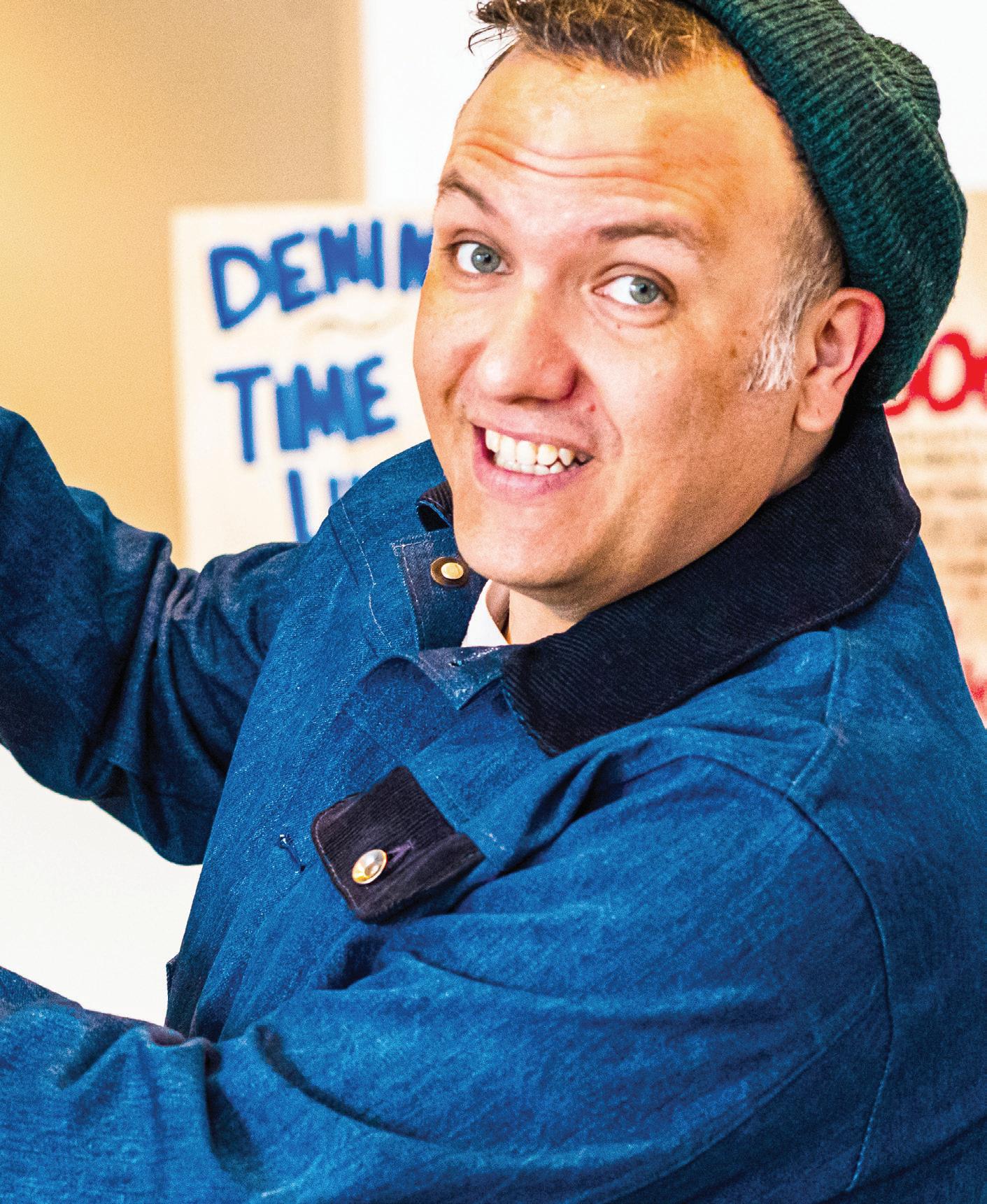

“I seek to rekindle the public memory of, and introduce a new generation to, a time when we were intimately connected to production.”
DAVID BIZZARO
The highlight of the exhibit was the denim jacket Bizzaro created. It stood on display in the center of the room and had the BZRO logo emblazoned on the inside. After doing even more research, he believes it’s the only known hand-woven denim jacket made in the United States since the 1700s.
“I reached out to the Smithsonian. They have not heard of any; they couldn’t confirm that mine was [the only one], but they said, ‘We do not have any record of one being done.’ I’ve reached out to a Levi’s historian and she was like, ‘To our knowledge, this is it.’ I’m still looking and I’m reaching out to all kinds of people — weavers, historical weavers, costumers, historians — asking them that question: Has anybody done this?”
The interest in the week-long exhibit showed David and Cassandra there is a market for locally owned fashion houses like BZRO in Tulsa. They have a plan to one day move the entire vertical integration operation into one building in their city. They want BZRO to be at the forefront of bringing back the textile industry in a state that was once one of the leaders.
“There’s lots of folks here that want to see this happen here,” Bizzaro says. “And frankly, to try to do it in New York or California just doesn’t make sense. The rent is too damn high. Over here, the rent can be figured out. There’s also tons of buildings that used to be manufacturing buildings that we could very easily get into and get up and running instead of trying to go rent a million-dollar storefront somewhere.”
While Bizzaro still calls himself a puppeteer and actor, he looks forward to the day both he and Cassandra can be fully invested in the BZRO brand instead of burning the candle at both ends.
“We’ve thrown the candle in the fire. If I could do this forever and make a living at it and be comfortable 100 percent — because my goal my entire life has been to be able to sustain my family with my art, and I don’t care what art that is,” Bizzaro says. “It just means if I’m expressing myself and I’m having a lot of fun and joy coming out of how I’m expressing myself and my family gets to be sustained and happy and enjoy themselves, that’s what I want.” •



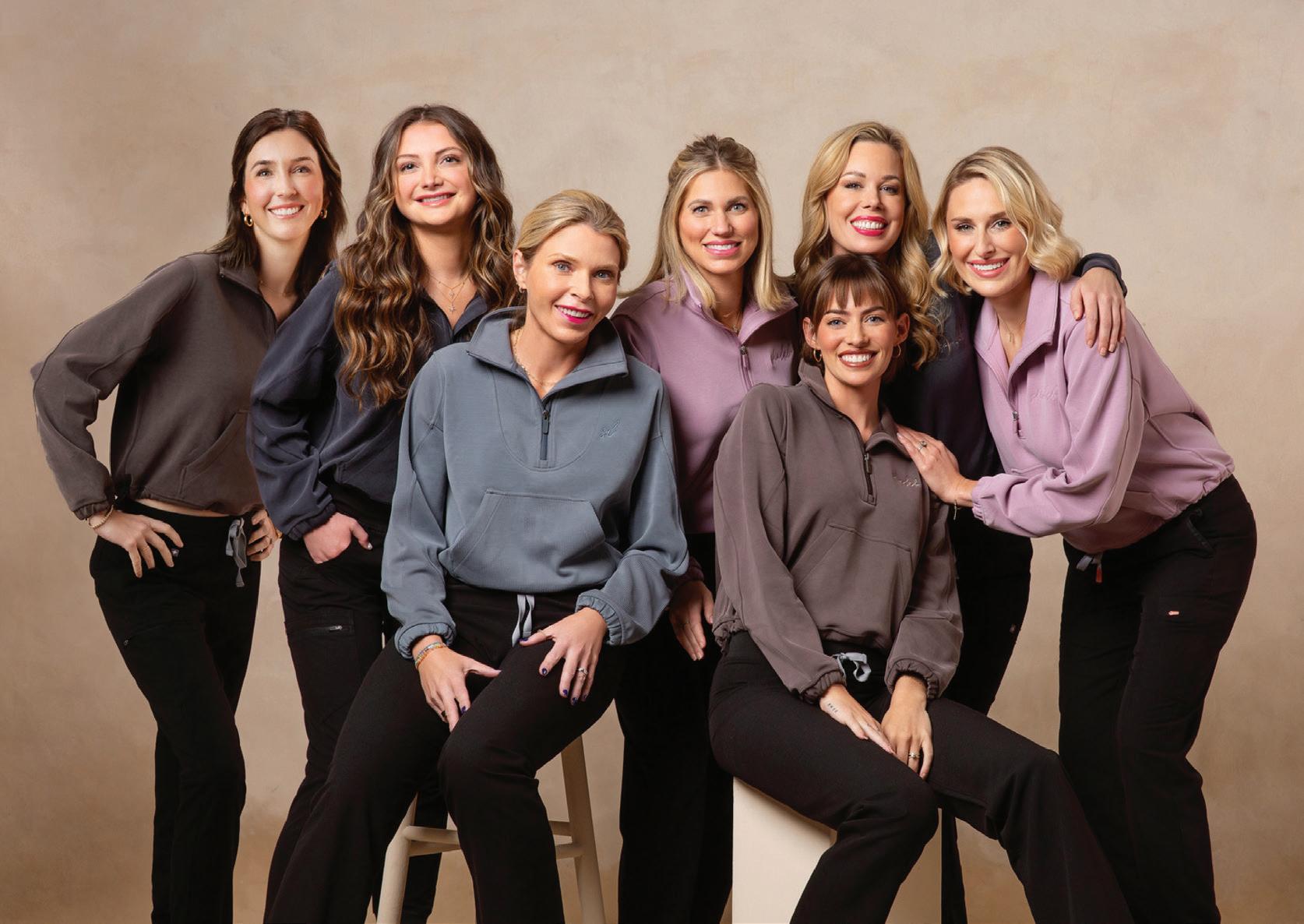

Reinventing dental care doesn’t mean doing things the easy way. It means doing things the right way. Earning our patients’ trust is a journey, privilege, and the foundation for everything we do.



These curators nearly left Tulsa; it took creating a global arts exchange to keep them
BY MEGAN SHEPHERD PHOTOGRAPHY BY TAYLOR VILLARREAL
For many artists, establishing oneself in the arts world means heading east for the galleries of New York City, or west for the sprawling landscapes of Santa Fe or Los Angeles. When picking an entry point, more often than not, Tulsa isn’t on the map. But curators Ashanti Chaplin and Lindsay Aveilhé think Tulsa is exactly the right ground on which to break creativity. So much so, they’ve launched a new global art platform to do it.
Chaplin and Aveilhé are the founders of Central Standard, a new platform dedicated to amplifying contemporary art from Middle America. Collectively, Aveilhé and Chaplin bring over 30 years of combined experience leading art institutions worldwide, but their latest project represents a shift away from the institutional. Neither a gallery nor a museum, and not quite a non-profit, Central Standard can be understood as a curatorial engine geared toward fostering global artistic exchange. Without a brick and mortar to anchor them, new possibilities are revealed — public shows, or private installations and events, always tethered by the work of Oklahoma-born and -based artists.
There’s a common conundrum that ambitious creatives from this part of the world often face: How can I produce at the level I want to in Oklahoma? Especially in the art world, where the nexus of activity has long been consecrated as New York, Miami, L.A. and European metros, Oklahoma doesn’t register as a place of significant cachet or artistic output. Central Standard is Chaplin and Aveilhé’s answer to this challenge.
Whereas this world may have historically overlooked Tulsa, Chaplin and Aveilhé see the region as home to a distinct, evolving and important artistic identity, and Central Standard as an opportunity to transmit that broadly. By connecting local artists with international collaborators and critics, Central Standard aims to create an artistic exchange where visionaries are connected across geographies, and where Oklahomans aren’t just learning from the art world, but where the world is also learning from the unique, evolving perspectives of Oklahoma.
Through the Tulsa Artist Fellowship (Chaplin is an alum, and Aveilhé is a 2025 fellow), the George Kaiser Family Foundation has invested significantly to bring artists and visionaries from the broader creative landscape to Tulsa for two-year residencies. But in some ways, even this sends a subliminal message that the socalled “art world” exists elsewhere — that it is something to go out and experience, or some place from which outsiders parachute in, bearing critique.
Rightfully or not, many Oklahoma creatives feel a need to leave the state to create work of “significance.” Even if those makers eventually return home, finding a path to produce at the same level here can be challenging. It prompts the question: What does it take to retain Oklahoma’s native creative talent? Is there another way to imagine the dynamic — one that doesn’t require its makers to take up permanent residency elsewhere, but instead leans into opportunities of creative exchange to elevate their work in the world?
In this version of the story, inspiration isn’t tied to some distant, proverbial world, but is instead found in the very soil on which we stand. This reframing gives us a narrative of homecoming, where Oklahomans feel a pull not to go, but to return to their roots— literally or metaphorically—and step back toward the creative identity that’s always been present and create from that context.
This is, in many ways, Central Standard’s origin story: two hypereducated, Oklahoma-born creatives move to New York, thinking they need to be on the coasts to make meaningful work and enjoy successful global careers — only to have life, heritage or something altogether inexplicable call them back to Oklahoma.
Despite orbiting each other for years in the same art circles and nightlife, Chaplin and Aveilhé’s paths never crossed in New York. It wasn’t until they found themselves back in Tulsa — complicated feelings and all — asking the gripping question that plagues so many of us approaching midlife, that their respective rivers finally converged: Well, what now?
“For both of us, it was a story of being from here, but then being gone and not thinking we’d be back,” Chaplin explains. “But life changes, and we do come back. So we both had to redefine what this place is for ourselves, and that takes time, and getting over some things — your preconceived notions about a place, and your relationship to it.

“Even with all the support [of TAF],” Chaplin continues, “something about coming back almost had me feeling a bit like a failure. But what I didn’t realize at the time was that I needed this space to understand my own voice and intention as an artist. I could never have made the art I’m making now in New York City. It was a tremendous wrestling. I also had this really profound spiritual awakening, and it changed my process. In New York, I’d been asking myself, ‘Is this work smart? Sellable? Commercially appealing?’ But when I got here and didn’t have those pressures, I told myself, ‘Well, each work will be a prayer.’ And that really opened me up, process-wise; if every work is a prayer, I can’t criticize it. I can’t say it has no purpose or intention. That really freed me to wander and make what I wanted to make.”
Wandering and freedom would become central to both Aveilhé and Chaplin’s work. For Aveilhé, this looked like curating The Soul Is a Wanderer, Oklahoma Contemporary’s ArtNow biennial exhibition in 2023. The exhibition was inspired by a line from the poem “A Map to the Next World,” a sort of elegy on ancestral wisdom written by U.S. Poet Laureate Joy Harjo (Tulsa; Muscogee Nation). Through Aveilhé’s curation and the poem’s invitation to remember the past and journey beyond the present, the show featured 13 artists’ explorations into Oklahoma’s complex histories, possible reimaginings of its future and a renewal of spirit — a return, perhaps, to what Harjo calls the “lush promise” we once knew so intimately.
For Chaplin, one of the show’s 13 featured artists, that freedom looked like getting into ceramics as a new discipline, and harvesting clay from Oklahoma terrain. Foraging the land opened up a line of questioning about clay, and finding questions and answers in the dirt. Her exploration led her to collect clay from the 13 remaining historically Black towns in Oklahoma, which she used to create an obelisk entitled “Earth Elegy” — a monument to what the ground still holds, and to reclamation of the sacred.
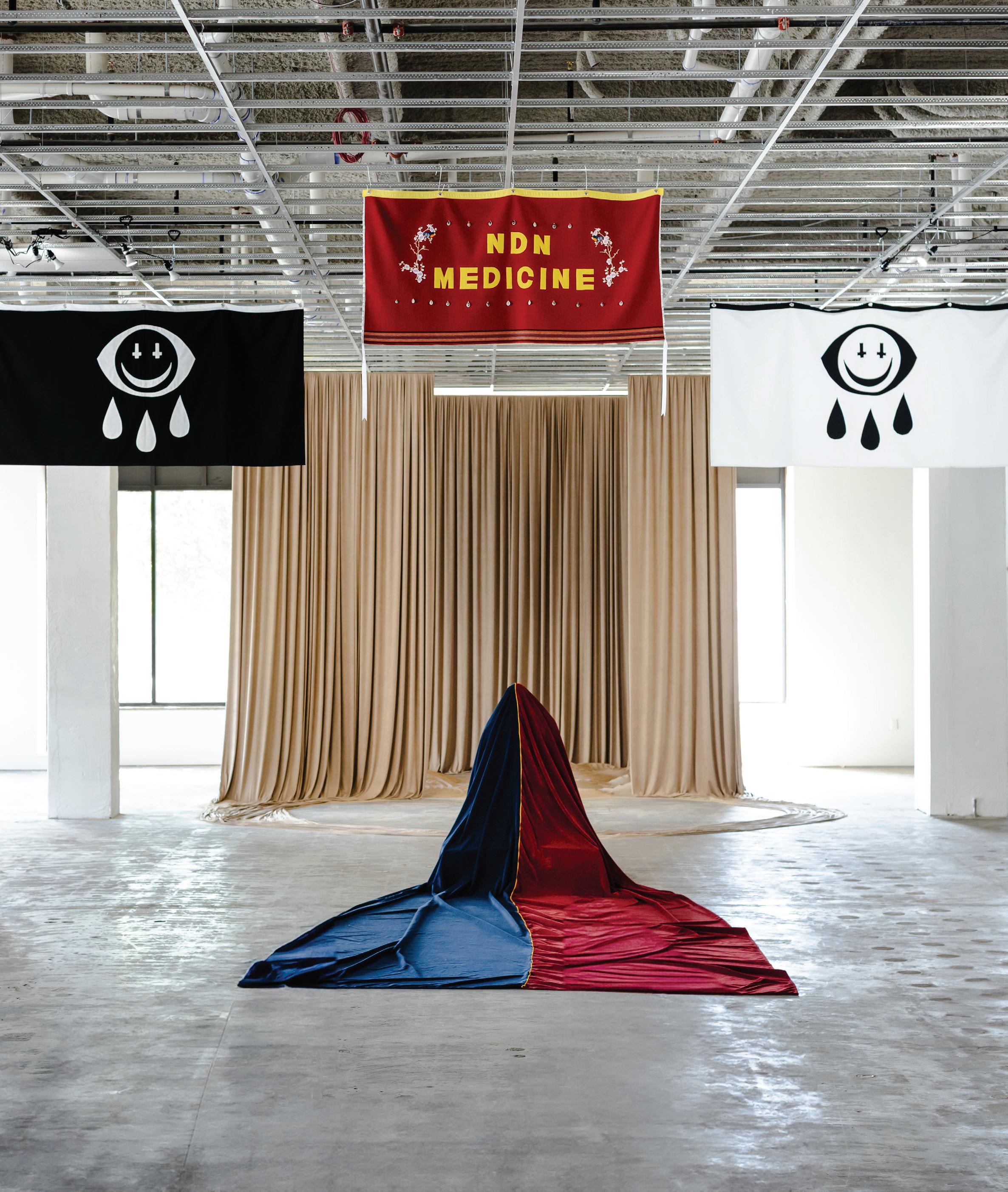
After the conclusion of The Soul Is a Wanderer, fueled by a shared connection in the work, Aveilhé and Chaplin started dreaming of what could be next, wrestling once again with whether they could produce the kind of work they loved in Tulsa, and if some kind of partnership might be the answer. It took some discernment, and a lot of nights of one asking the other how serious they really were, for something to break forth.
“We felt like we were one foot in, one foot out,” Aveilhé admits. “We had such a love for being here, but also hadn’t yet identified our deeper purpose here. We were stuck. So we said, ‘Let’s start thinking about what it would feel like to be two feet in. What would it look like for this to be the place we need it to be?’”
Eventually, Central Standard was born. The name is a nod to the time zone in which the project lives, and perhaps to elevating the standard and visibility of contemporary art in Oklahoma.
“We have two fantastic institutions here,” Aveilhé points out, “both collecting museums. But they have a lot of different requirements for what they do. And although they love it, they can’t always feature contemporary work. But we have a lot of contemporary artists here, and we realized we could help fill that need.”
Whether a matter of space, collection size or audience and donor interests, Tulsa’s existing art institutions are not exactly created for contemporary experimentation. Consider the buildings alone, and how the hulking structures color the works inside of them: the pedigreed, 100-year Villa Philbrook, its formal gardens, Italian Renaissance architecture and marble columns; or Gilcrease, with its deep collection of art from the American West and thousands of historic and archaeological artifacts. While both are best-in-class institutions, the tension of prehistoric artifacts juxtaposed with the contemporary and ephemeral might feel especially pronounced in such a venue.
Today, the same lines of inquiry explored in The Soul Is a Wanderer are finding expansion with Central Standard, and in particular, in its inaugural exhibition, Drift///Hold. Presented in partnership with The Tulsa Artist Fellowship, the show is currently on display in Tulsa’s ARCO Building, thanks in large part to a venue sponsorship from Price Family Properties. The exhibition features works from BIPOC artists Chaplin, as well as Yatika Fields (Osage, Muscogee, Cherokee), Le’Andra LeSeur, Warren Realrider (Pawnee, Crow) and Nathan Young (Delaware Tribe of Lenape Indians), and collectively explores themes of transformation, water as a collective source, language and the fluid interplay between physical and metaphysical worlds.
OPPOSITE:




It’s a stunning, sonically and visually arresting show that presents each work as being in conversation with the others — sometimes quite literally, as many of the multi-media works incorporate sound. As the pieces speak to each other, and as viewers listen in, they reveal a dialogue about memory and perception, ancestral wisdom, shared histories and liberation.
On a private viewing accompanied by Chaplin and Aveilhé, I found myself crying at Le’Andra LeSeur’s piece, “That body of (a reflection of the sky),” a freestanding, kaleidoscopic sculpture that uses collage, video, light, sound and original poetry to walk the viewer toward a baptism, or perhaps an anti-baptism. Accompanied by an audio excerpt from a sermon and the clanging of church bells from another piece in the show and those of the nearby Cathedral District, the piece evokes complicated feelings of collapse, renewal, ancestral wisdom and spiritual trauma found in healing waters. Especially when viewed against the symbolism of river as a road, Chaplin pointed out, which guided the forced migration of Native and Indigenous ancestors to Oklahoma, these ideas and emotions become even more pronounced.
“We were stuck. So we said, ‘Let’s start thinking about what it would feel like to be two feet in. What would it look like for this to be the place we need it to be?’”
LINDSAY AVEILH É
Drift///Hold is emblematic of the kind of fluid study and communal conversation Central Standard aims to facilitate. And certainly, viewing it in Tulsa elevates its significance in a way that only the history and context of this particular place, these particular artists, perhaps this particular kind of platform could.
Chaplin and Aveilhé said Central Standard will be itinerant in concept for the foreseeable future, “until we feel like we have some really profound support from our community, and outside of our community.” As for that itinerary, it includes another five projects currently in development, some of which are being conceived for their current space, and others that might be most successful someplace else. If done right, Central Standard believes it can create spaces where art is “fluid, interdisciplinary and truly inclusive,” and establish Tulsa as a global, dynamic hub for contemporary art.
In the words of Chaplin, “If you can’t find it, you gotta make it.” •
Drift///Hold is on view at Tulsa’s ARCO Building until April 18.
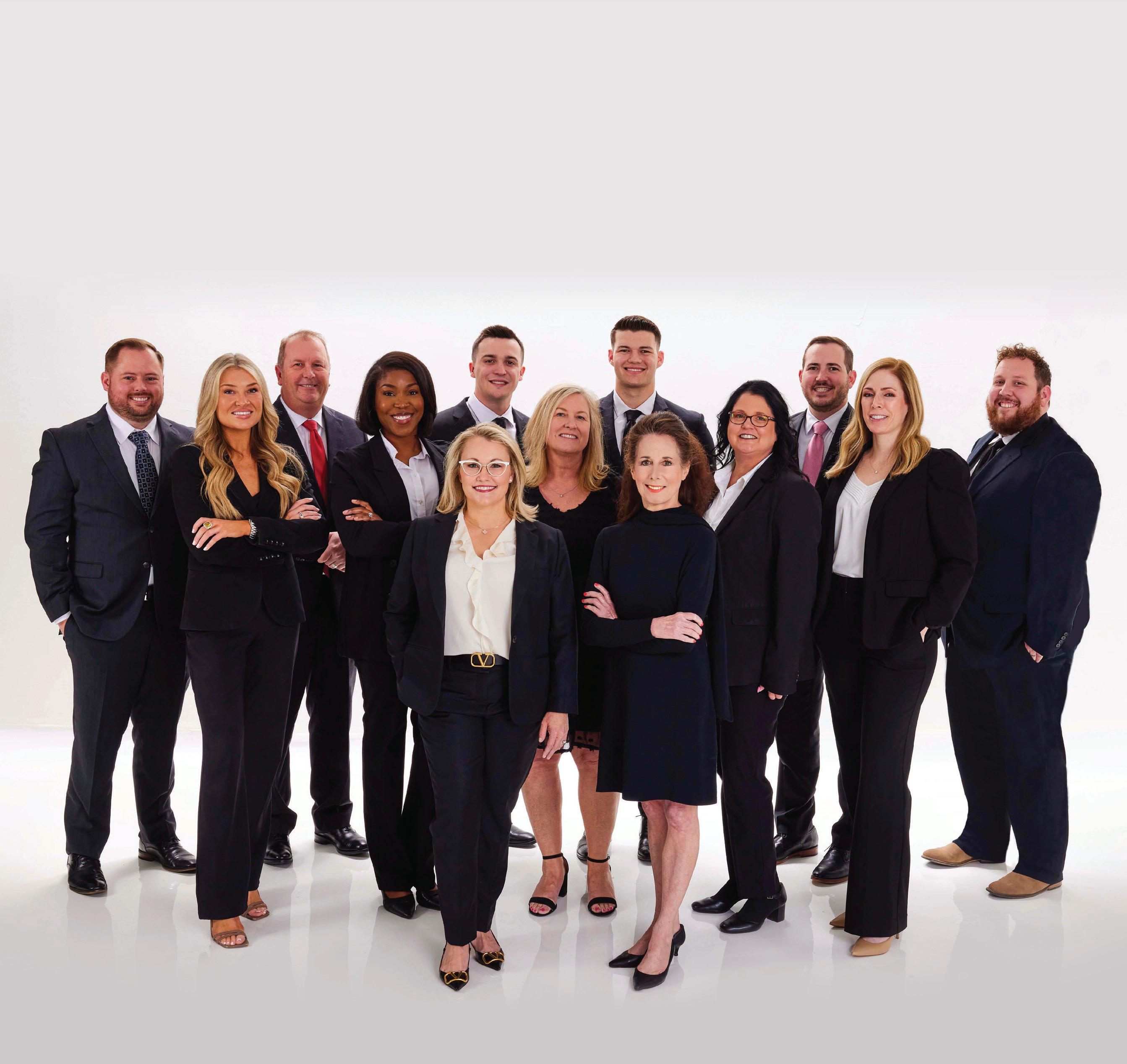







BY KATE FRANK AND ANDREA SCHULTZ
Oklahoma’s longstanding influence on the American School of architecture has taken center stage for decades, but often not included in this narrative are the interior designers and decorators who help breathe life into these incredible homes and structures. Meet eight tastemakers behind some of these thoughtfully curated spaces, whose influence continues to push the boundaries of furnishings and design within our state and beyond.
A
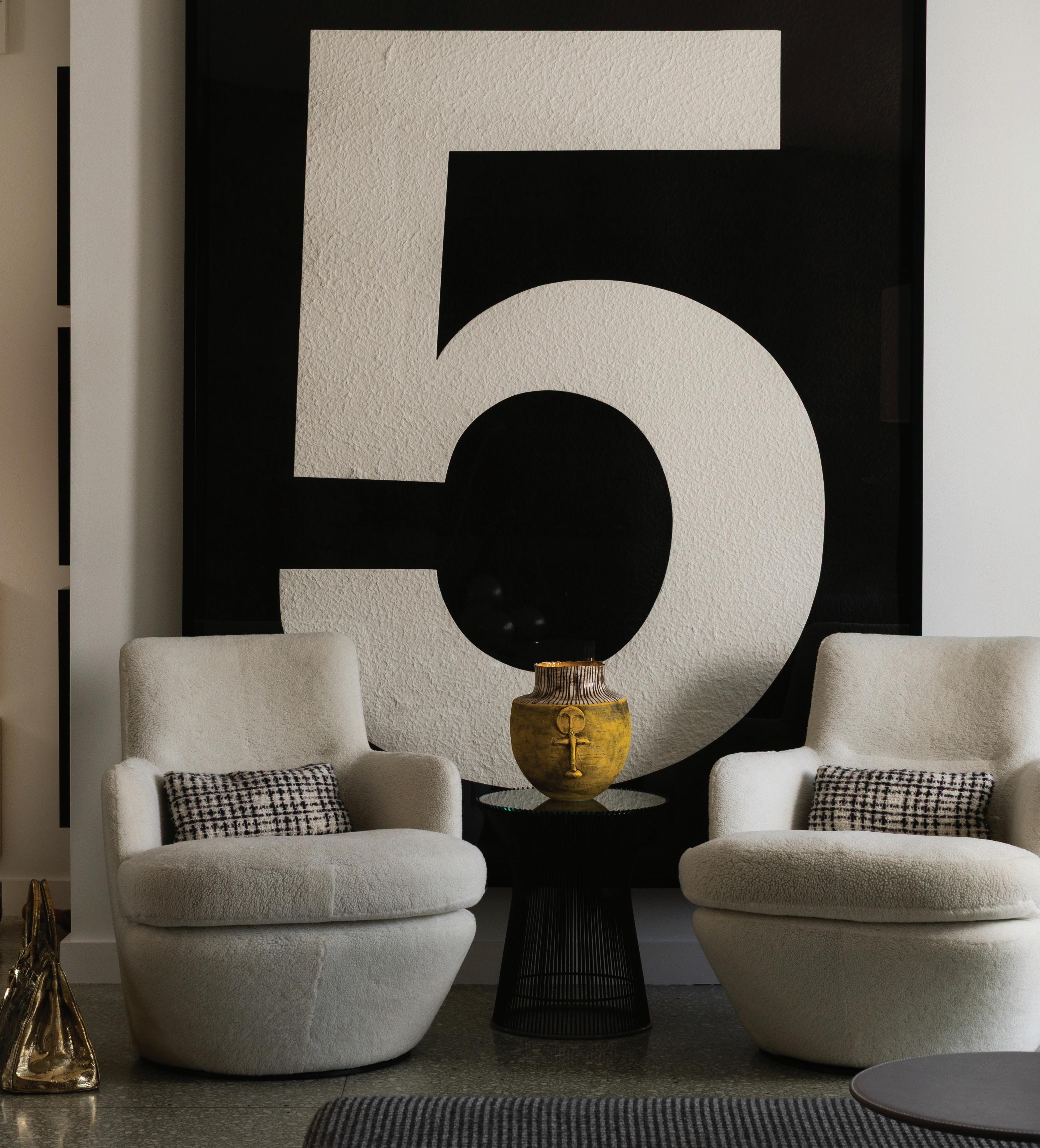
For Christopher Murphy, design is more than aesthetics; it’s a deeply personal and ever-evolving expression of the client. “Our designs have a quality of looking like the client, with an intentionality of giving them something they didn’t know they could have,” he explains. As the founder of Christopher Murphy Designs (CMD), a firm that has thrived for over 30 years, he has built a reputation for creating spaces that are as dynamic and distinctive as the people who occupy them.
Murphy’s passion for design began at an early age, heavily influenced by his upbringing in Nebraska — often helping his mother with home renovations and party planning while learning outdoor landscaping and patio design from his father. His childhood home became his first creative playground, where he experimented with design skills that would later define his signature approach. His passion for creating spaces is deeply influenced by his love for travel and the diverse experiences he has gained from visiting 89 countries and counting. From the vibrant hues of Brazil to the rich textures of India and the electric energy of Hong Kong, every destination fuels his creativity. “Inspiration is everywhere, even in the trash on the street,” he says.
Based in Tulsa, Murphy takes on a wide range of projects, from luxury homes and commercial spaces to event design and landscapes, all reflecting his timelessly bold approach with a fearless embrace of color and a keen eye for detail. Whether it’s a sleek ski retreat in Utah or a Dallas residence, he ensures each project feels both intentional and deeply personal. Murphy continues to shape spaces that evolve with his clients, proving that great design is truly limitless.
Follow his work at @christophermurphydesigns and his company online at murphydesigns.com.





Cassie Johnson’s approach to design balances between tradition and modernity, nature and structure, trends and timelessness. Originally from Kansas, she began her career in Tennessee before making the move to Tulsa, where she has worked at SR Hughes ever since. Despite having only visited Oklahoma a handful of times before relocating, she quickly found inspiration in the state’s landscapes, allowing her to seamlessly blend natural elements into her designs.
Her approach is rooted in the belief that a space should feel both familiar and unexpected, where textures, colors and thoughtful details create a welcoming, elevated atmosphere: “feeling like you’re at home but in an unexpected way, creating a new sense of comfort,” she says. In both residential and commercial spaces, she focuses on working with existing character rather than forcing fleeting trends … although she loves incorporating bold color statements, like the growing trend of color-wrapped rooms.
Her work is deeply inspired by Oklahoma landscapes, blending earthy tones and rustic elements to create a warm atmosphere. A recent project in Pawhuska exemplifies her design perspective, where natural hues and expansive windows brought the surrounding plains into the home, allowing the colors to “live together, inside and outside.”
Follow her work at @cassiejdesigns and her company online at srhughes.com.



Having spent almost his entire career working in interior design, VanBuskirk opened his own firm, Cash VanBuskirk Designs, just over four years ago. Originally from Ponca City, he pursued a bachelor’s degree in journalism from Oklahoma State University, moved to Los Angeles right after graduation — and immediately realized that was not the path meant for him. Design and interiors have been a natural instinct for VanBuskirk since a young age: “It was that inkling of like, ‘This is what I did as a kid. Maybe this means something.’”
Returning to Oklahoma a few months later, he began working at another interior design firm based in Oklahoma City, building on those childhood experiences. “I remember there was this old fence that fell down by my parents’ house, and I was like, ‘I want to put that against the wall behind my bed’ — I don’t think shiplap was even a thing yet. I had parents that were so supportive. I convinced them to tear down a wall between two bedrooms in our house to make a bigger bedroom, and was helping call shots like that when I was in middle school,” he remembers. “And my dad was super handy, so he was able to do whatever. We were always a very hands-on family, which I think helped.”
There are certain elements that will be in every project that make VanBuskirk’s designs distinctive — such as the use of natural stone. “I’ll do a more modern home, I’ll do a more traditional home, I’ll do a mid-century, eclectic, whatever that might be, but in each one I have my contributions that I will include in every project. Obviously, I don’t want to do some style that is just 180º different from mine, just because that’s not going to benefit me or the client in the end.”
Determining taste compatibility is part of a process that’s anything but hands-off: “I love to go to a coffee shop and meet with potential clients so we can chat — not even all about design, but just getting to know them,” VanBuskirk says. “We’re going to become friends throughout this process, and I’m just going to be your designer at the same time.”
Follow his work at @CashVanBuskirk and @CashVanBuskirkDesigns and online at cashvanbuskirk.com.



With a background in photography and a deep-rooted connection to nature, Kim Fonder’s journey into interior design was a natural evolution. She began as a gallery owner and artist, and her neutral, organic aesthetic quickly gained recognition, as clients began entrusting her not only with their walls but with their entire homes. “My art is a part of my existence, and my design is a part of how I live,” she says, a philosophy that shines through in every space she creates.
Her design style, which she describes as “Pacific Natural,” is a seamless blend of effortless elegance and natural textures. Fonder’s art has been showcased in some of the country’s most prestigious locations, including installations at Restoration Hardware. Her projects span from Los Angeles and Washington, D.C., to Costa Rica, reflecting her ability to merge art and design on a global scale.
Fonder’s Tulsa-based Exhibit Art Gallery, which she opened in 2008, continues to be a space where art and interior design intertwine. With a style inspired by landscapes, Fonder finds beauty in simplicity, whether in the expansive skies of Nebraska, the sunsets in Oklahoma or the rugged natural beauty of her hometown in Oregon. She attributes her artistic eye to growing up surrounded by nature, spending hours photographing the changing light on the horizon. Her affinity for the outdoors shaped her preference for natural textures and organic elements, and her deep love for Oklahoma landscapes has influenced both her art and her interiors. “It feels rich, there’s a lot of depth to it,” she explains. Today, Fonder continues to shape both residential and commercial spaces, bringing her thoughtful and intuitive approach to every project.
Follow her work at @kimfonder and her company online at kimfonder.com.



Katelynn Henry’s love for design was shaped by weekends spent exploring furniture stores with her parents, where she immersed herself in a world of color, texture and style. Today, she owns Henry Home Interiors, a 10,000-square-foot store in Norman that showcases her approach to interiors, vibrant colors, bold patterns and thoughtfully curated pieces that bring spaces to life.
Henry’s aesthetic is bold and dynamic, but above all, adaptable. “We can do any style, any look,” she says. “People come to us because they want something fun and exciting.” She draws inspiration from everywhere: bustling design markets, unexpected pattern pairings and even the imaginative world of her two young daughters, who find magic in the smallest details, like a butterfly light fixture that quickly became a household favorite.
Drawing inspiration from the creative spirit of her local community, Henry often collaborates with Oklahoma-based artists and fills her store with pieces that celebrate the talent and artistry found close to home. For Henry, every home is a reflection of the people who live in it, a story waiting to be told, and her mission is to help clients bring that story to life with confidence, personality and a fearless use of color.
Follow her work at @henryhomeinteriors and her company online at henryinteriors.com.


A client home highlights Katelynn Henry’s sharp eye for color pairings and textural contrast.
OPPOSITE: Jennifer Oliver’s talent for layering patterns and anchoring the space with rich, deep-hued wallpaper featured in a recent client home.


Design came naturally to Jennifer Jarrard Oliver thanks to a career in real estate, where she had a gift for seeing not just what a home was, but what it could become. As she and her husband flipped more than 20 homes, moving into and transforming each one before selling, her passion for interiors became evident. Rather than just purchasing a house, her clients were drawn to these particular homes, eager for Oliver to shape these homes and make them their own.
Oliver believes a home should evolve with its owners, accommodating every stage of life. Whether she’s designing a house for a young family or, as in her latest project, gut-renovating a home for a couple in their 80s, her approach is the same: Create spaces that feel joyful, functional and uniquely tailored. “I want them to feel as happy in their house as I do in mine,” Oliver says. “I want to be able to give that to them.”
With an eye for bold color, wallpaper and layered textures, Oliver blends traditional design with a modern touch. She draws inspiration from Oklahoma’s vibrant creative community, often incorporating pieces from local artists. For her, design isn’t just about aesthetics, it’s about storytelling, nostalgia and crafting a place that truly feels like home.
Follow her work at @jennyjarrardinteriors.
Blake Colburn is the Associate Creative Director at Jaipur Living, the U.S. branch of Jaipur Rug Company, which was founded in 1978 in Jaipur, India, by N.K. Chaudhary. Originally working beside nine artisans on two looms, Chaudhary has grown the company to be one of India’s largest manufacturers of hand-knotted rugs and is often referred to as the “Gandhi of the carpet industry.”
The company’s American headquarters are based just outside Atlanta, Georgia, where Colburn is currently living. Quite a comeup for a kid from Checotah, Oklahoma (the same hometown as Carrie Underwood), who in his own words “grew up in a small town of about 5,000 people, farming and baling hay, and didn’t have any expectation of going to college.”
After studying biochemistry at Oklahoma State University, Colburn was working in the Lowe’s paint department in Oklahoma City when Brandon Smith at Dwelling Table asked if he would be interested in styling a photoshoot; it evolved from there. “I’ve loved rugs my entire life, and was selling antique rugs myself through college. I always just enjoyed interior design, then I got into prop styling, and had studied the rug industry for so long that I was familiar with the right people to connect with, and was just recruited to be here, honestly.
“I had the opportunity to go to an art gallery in Texas, and Lacey Land, the creative director for Loloi, was based in Dallas. I had followed her through her entire career journey, and so I invited her there, just because I wanted to meet her and I was graduating college. I had applied for dental schools, but I just wanted a break and didn’t want to continue school yet. So I met her, and it was just a domino effect of her just getting this huge opportunity to move to Atlanta and lead this new creative team. And even though we’d just met, she was like, ‘I know nothing really about you, but I just had this feeling, and I know you’re supposed to be on my team.’” Her instinct has paid off quite well.
“My passion has always been in making good design mass consumable — like a Zara home. I want good design to be available to everybody, because growing up, I could never afford any of that,” Colburn says. “But the taste levels are there, and so you want to make it at a price point that’s consumable for everyone.”
Follow his work at @blakecolb and @jaipurliving, and his company online at garmon.co.



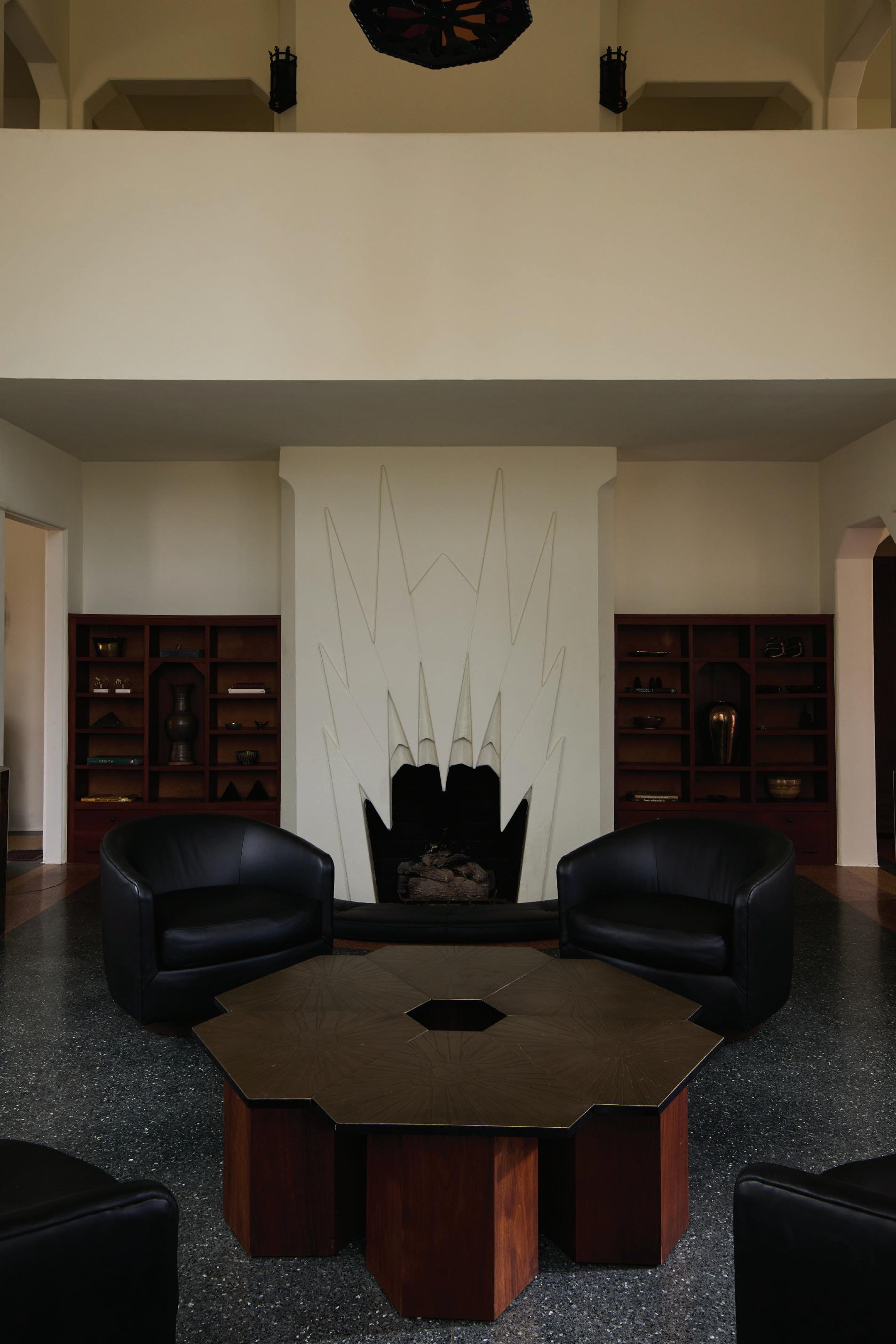
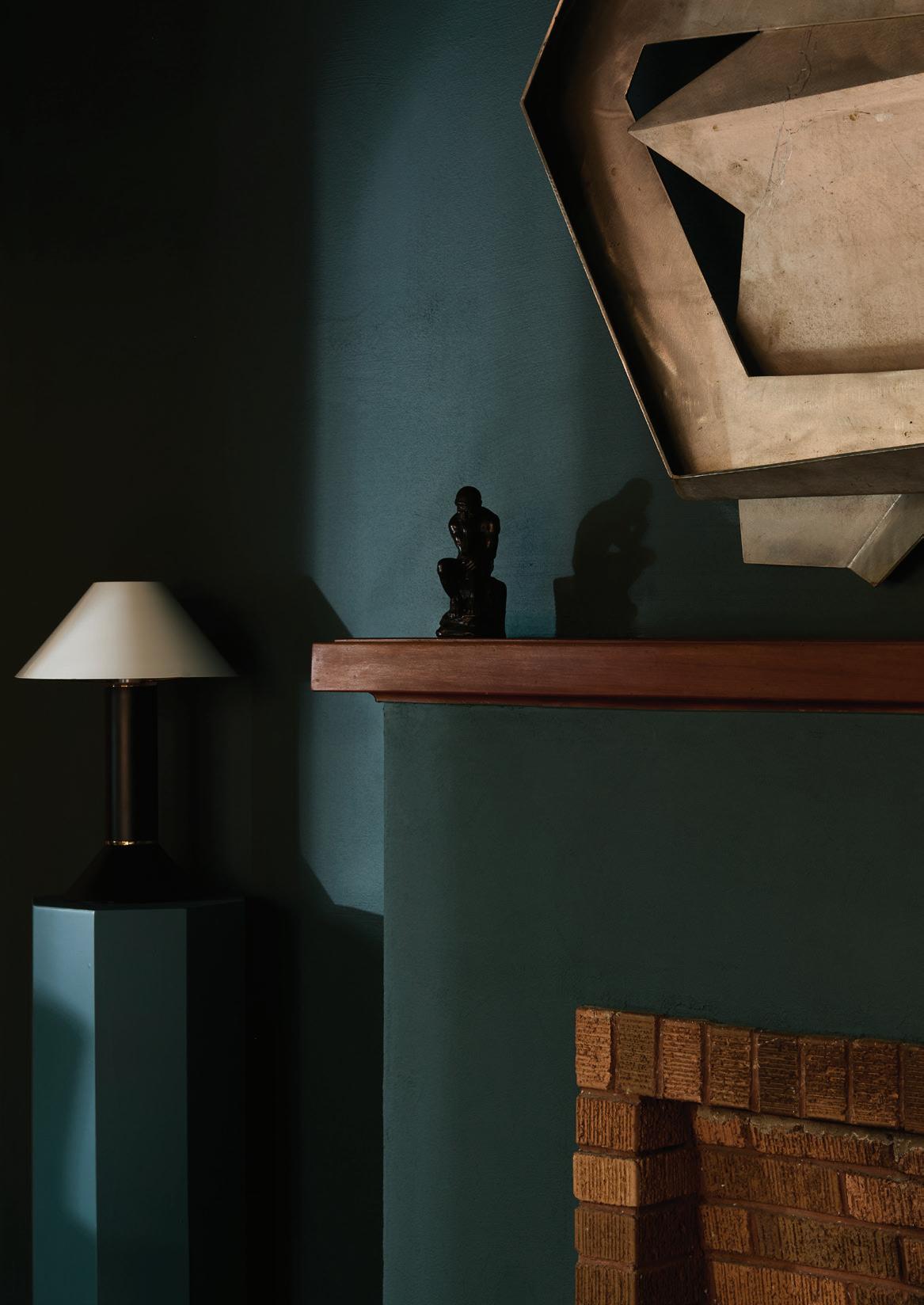

LEFT:
Art Deco furniture and objects curated and styled by JQI.
OPPOSITE:
Restoration of The Oath Studio, designed in 1925 by Bruce Goff for Adah Robinson, revitalized by Rod Yancy in collaboration with JQI.
Based in Tulsa, Justice Quinn has garnered a steady reputation for restoration and design inspired by Art Deco architecture and the love of furniture and objects.
“It really started with furniture — collecting and buying,” he says. “I probably started some 10 years ago and in doing that, you just develop a taste and you learn what you love. There came a moment after just buying and dealing furniture that I realized I lost passion as soon as it would leave my hands. Then I thought, after some conversations with friends, ‘What could it look like to start decorating with the pieces that I find?’ And so that’s really how it came about. It was the clients early on who saw the vision that I had for an interior and allowed me to create those interiors with a majority of the stuff that I would source around the United States. Since then, it’s just been one project after the other through word of mouth.”
Having a love for Deco architecture and living in the global Art Deco hub that is Tulsa, Quinn has been able to take on projects that align with his natural vision for an interior.
“Bruce Goff was a hero of mine long before I even got my start in interiors,” Quinn says. “There were reasons behind the way he designed the way that he did. He’s a small-town Kansas boy, and you know, being a small-town boy from Oilton, Oklahoma, I felt some similarities there.”
His latest project, The Oath Studio, was a year-long restoration of a house built in the 1920s by Goff and architect Joseph R. Koberling Jr. for their teacher and artist Adah Robinson.
“It’s just a special property,” Quinn says, adding how fortunate he felt “to be able to work on a project like that with my client, Rod Yancy, who’s an entrepreneur in Tulsa and was just incredible to work with. He trusted my vision. We collaborated to do our best interpretation of restoration with a little bit of innovation where we could. A project like that is why I started my firm, so that’ll long be one of my favorite projects.”
Coming from a place of pure love for what he does, Quinn focuses on giving clients a one-of-a-kind experience, and to show that you can do more rather than less. •
Follow his work at @justicequinn.interiors, and online at justicequinninteriors.com.






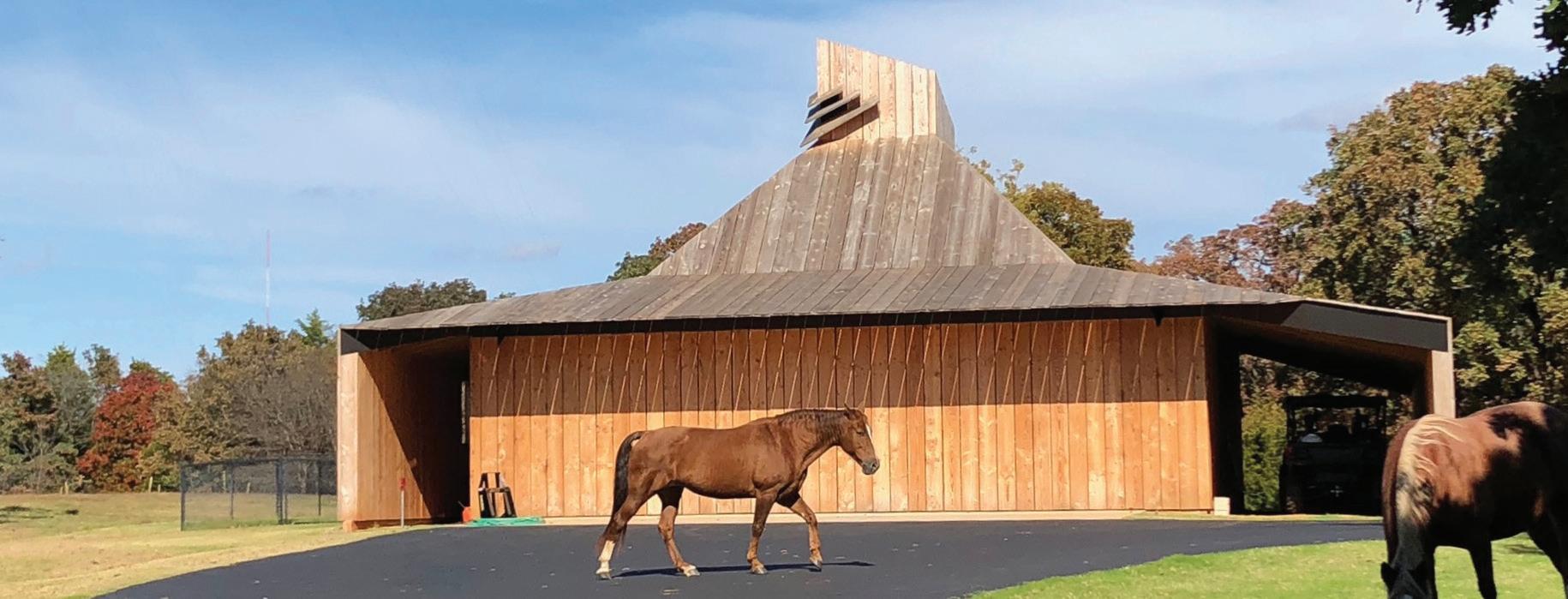


Pfeifer Jones’ latest magic trick brings Tulsa to the Venice Architecture Biennale
BY ANDREA SCHULTZ
Imagine being able to experience one of Tulsa’s most significant examples of Art Deco architecture half a world away, in the Palazzo Mora in Venice, Italy … through an interactive suspended paper dome? Tulsa-based architecture studio Pfeifer Jones is doing exactly that; through an opportunity of creative cultural exchange, it is displaying its “project in a bag” at this year’s Venice Architecture Biennale.
By graphically mapping the interior of Tulsa’s Boston Avenue Methodist Church onto the inside surfaces of a suspended paper dome, the “Organ Drone Dome” becomes an intimate performance venue that makes for a striking interactive art and architectural experience. This iconic Tulsa edifice was designed by Bruce Goff and Adah Robinson and was completed in 1929, and designated as a National Historic Landmark in 1999.


Bret Pfeifer and Aaron Jones are the duo behind Pfeifer Jones, and they co-own what they refer to as an “experimental architecture studio” based in the downtown Deco District. Initially meeting back in college while studying architecture at Oklahoma State University, both moved outside the state to follow their career paths but found their way back to Tulsa about three years ago.
After living and working in New York City since graduating, Pfeifer decided to move closer to home after having a daughter in 2010, and began working for Selser Schaefer Architects (now Narrate Design). “Maybe three years ago, I got a call from Aaron, but we’ve been keeping in touch and working together on various creative projects over the years. He called me thinking the same thing—that it might be time to move and be closer to home. He was calling to check the market and see who might be looking for some talent here, so I immediately got excited and we kind of just formed our studio from there.”
Their current project has its roots at a different state university. “We recently had been part of the Outré West exhibition at the Oklahoma Contemporary Arts Center in Oklahoma City, showcasing that school of thought that originated here with OU,” says Pfeifer. “One of the architects being Herb Greene, another was Bruce Goff. That Bruce Goff connection was at the forefront of our mind, so as we were looking at these cathedrals here, we immediately just saw Boston Avenue with the Goff connection. We got permission from the church to photograph their main sanctuary space to use as this creative project, sort of as the backdrop. Then from there, started thinking about, ‘Okay, well, what could be a musical component to this that has Tulsa roots?’ So we linked up with a sound artist named Dave Broome, who we had worked with previously on another creative project; he’s Tulsa-based and has deep roots here, so it just made sense having him come on board. He composed a little twominute looping track of a drone organ sound that he manipulated to where the end of that two-minute loop sort of starts to disintegrate sonically, and does this weird audio left, right, kind of dance track that gives it a very cool effect.”

“We’re taking Tulsa, Oklahoma, our region, to Venice and celebrating that.”
BRET PFEIFER


Entitled “Organ Drone,” the score draws linkages between the stretched interior graphics and a series of elongated organ notes or “drones.” The interior dome surfaces or “intrados” are mirrored, mapped and “groined” into a three-chambered environment through low-poly modeling, graphic manipulation and experimental printing techniques. By incorporating the musical scores within these historical interiors, it is meant to stoke a deeper and more critical engagement of both elements.
Jones’ background was in this cross between the music world and the architectural design world. By building on established working relationships with a group that had exhibited previously at the Venice Biennale, Pfeifer Jones received an invitation to be a part of the exhibition this year—it was the perfect opportunity to showcase a local expression of their performance art installations on an international level.
“We wanted to kind of make it a regional or specific type of piece, and so we began thinking about where we’re based and how to incorporate it into the piece,” says Pfeifer. “So in a way, it is us now bringing our experiences from previous work to life back home— like the inverse of that. We’re taking Tulsa, Oklahoma, our region, to Venice and celebrating that.”
Of course, traveling internationally with your “project in a bag” could hardly go without a few hang-ups. Jones recaps the day they landed: “Arriving in Italy Saturday morning around 10:30 a.m., but our project bag got delayed. So we spent most of the day with Air France baggage support trying to figure out what’s going on. We also didn’t have some of our personal items, but were able to get them on Sunday to begin setting up as scheduled on Monday.”
This quick trip overseas during spring break allowed time for them to come back and continue projects locally, as well as spread the word about the piece of Tulsa that will be on view—to make sure it is on the summer vacation itinerary for those who are planning to attend the Biennale in Venice, or may want to now add that to their list of must-see exhibitions.
For those interested in architecture, art or merely the power Oklahoma natives have to continue to shape the cultural landscape at large, Pfeifer Jones is a blueprint example of how a seasoned creative practice of pursuing culturally significant project types, scales and sites has now provided a well-deserved international presence. See it in person during the Time-Space-Existence exhibition on display at the Palazzo Mora in Venice, Italy, from May 10 to Nov. 23. •
Follow the studio at @pfeiferjones, and online at pfeiferjones.com, and learn more about the 2025 Venice Architecture Biennale at europeanculturalcentre.eu/allevents/exhibitions.
Our treatment approaches are based on healing with lifestyle changes, natural supplements when possible and pharmaceutical interventions when necessary.

These therapies provide vitamins and nutrients directly into the bloodstream rather than requiring your GI tract to absorb and break them down.

Not just wrinkle reduction! We focus on slowing down the aging process inside your body, hopefully resulting in a healthier life.

To test for delayed food sensitivities, we use panels that involve a blood draw and can test for up to 200 different foods, food additives and colors.

Sometimes a new approach is needed to try and put the pieces of the puzzle together. Let us help you figure out the issue.

Have you been told your thyroid is normal, but when looking at a symptom checklist for thyroid conditions, you have every symptom? Let us help!

Men’s hormones can be very complicated. There’s not one solution for everyone. We take an individual approach to your individual needs.

An autoimmune process involves antibodies attacking your own body. Our approach is to look for underlying causes of the issue.

Hormone fluctuations can occur at any age in women. Understanding how all the hormones interact is important in customizing your individual treatment plan.

Our team is excited to continue helping patients achieve their optimal health through customized programs integrating conventional, alternative and restorative medicine at:
809 NW 57th Street in Oklahoma City


Co-Owner

NAD+: NAD+ is the key to cellular energy and longevity, and I’ve been using it long before it became popular! It fuels your cells, sharpens mental clarity, and supports long-term brain health.
Sermorelin: Want to build lean muscle, burn stubborn fat, and feel unstoppable? Sermorelin is the game-changer you’ve been waiting for! This powerhouse peptide naturally boosts your body’s own growth hormone, igniting your metabolism, enhancing recovery, and giving you the energy to crush every workout.
GHK-CU: Collagen production drops as we age, leading to wrinkles, sagging, and dull skin. GHK-CU is a copper peptide clinically proven to boost collagen, accelerate healing, and reduce fine lines.
GLP-1 Microdosing: While many recognize GLP-1 for its weight loss benefits, its impact goes far beyond shedding pounds. This powerful peptide plays a vital role in regulating metabolism, improving insulin sensitivity, and reducing inflammation throughout the body.
Minoxidil/GHK-CU Hair Dropper: Hair loss isn’t just genetic—stress, hormones, and aging all play a role. This powerful combination stimulates hair growth, strengthens follicles, and improves scalp health.
Glutathione: Toxins, stress, and aging deplete your body’s natural defenses. Glutathione is the most powerful antioxidant for detoxifying the liver, strengthening immunity, and brightening the skin.
Lights Out Sleep Spray: Struggling with falling asleep or staying asleep? Poor sleep affects hormones, energy, and recovery. This blend of GABA, valerian root, and melatonin calms the mind, relaxes the body, and helps you fall into deep, uninterrupted sleep.




Organic Squeeze believes in HEALTH, HAPPINESS AND COMMUNITY by creating a welcoming environment for juice lovers from all walks of life. No matter your situation, we seek to help you reach your full potential in leading a healthy life, through education and prevention. We believe in nurturing and empowering our guests so that restoration and detoxification can occur in both the mind and body.
WE ALSO OFFER CLEANSES THAT INCLUDE OUR ORGANIC FOOD & SMOOTHIE OPTIONS!

BY ALEXANDRA BOHANNON
What do the samurai — the honorable and fearless legendary warriors of Japan — have to do with Oklahoma? More than you may think.
The internationally recognized traveling exhibit SAMURAI: Armor from the Collection of Ann and Gabriel Barbier-Mueller is now open at the Philbrook Museum of Art in Tulsa. This exhibit, showcasing nearly 80 samurai artifacts from over nine centuries of Japanese history, will be at the Philbrook through Aug. 3.
But what was it about SAMURAI that captivated the museum team enough to bring it to Tulsa? According to Kalyn Fay Barnoski, curator of the exhibit, Philbrook is exhibiting SAMURAI as part of a community request — which is, incidentally, in keeping with the literal definition of the word samurai as “one who serves.”

Armor of the Nimaitachidō Type detail
Attributed to Myōchin Yoshimichi, Helmet, c. 1400 (Muromachi period).
Attributed to Myōchin Munenori, Armor, 18th century (mid-Edo period).
and
“People really like things that aren’t part of their everyday and they don’t have a deep understanding of. So there’s a fascination aspect to it,” hypothesizes Barnoski on why the samurai have such widespread interest.
Interest in samurai has caused the exhibit to travel the world, being shown at institutions such as the musée du quai Branly–Jacques Chirac in Paris; Musée de la civilisation in Québec City; the Museum of Fine Arts in Boston; the Portland Art Museum in Portland, Oregon; the Kimbell Art Museum in Fort Worth; the Los Angeles County Museum of Art, Los Angeles (LACMA); Centro Cultural La Moneda, Santiago, Chile; the Denver Art Museum; and Kunsthalle München in Munich, Germany, with the most recent stop being the Virginia Museum of Fine Arts in 2024.
Now, in 2025, Philbrook joins this list.
This chapter of the samurai story is one that craftsmen in 12thcentury Japan certainly couldn’t have expected. How could they have anticipated the voracious fascination residents of the Western Hemisphere would have with their artifacts, culture and customs? Swiss-born developer and owner/collector of the Dallas museum named for him and his wife, Gabriel Barbier-Mueller is no exception to this fascination.
Barbier-Mueller acquired his first piece of samurai armor around 30 years ago in Paris, according to coverage by the Associated Press. That initial acquisition expanded into one of the world’s largest privately held collections of omote dogu — the military equipment of the samurai, like armor and weapons.
By 2012, the family’s collection was extensive enough to support a museum. The approximately 400-piece collection at the Ann & Gabriel Barbier-Mueller Museum in Dallas’ Hardwood District is continuously updated with new exhibits and pieces. Just last year, the Minister for Foreign Affairs of Japan recognized Gabriel BarbierMueller for “fostering mutual understanding between Japan and the United States.”
But before the collection had its permanent public home in Dallas and was recognized for diplomatic contributions to cross-cultural understanding, word was spreading through the international art community about the extensiveness of Barbier-Mueller’s privately held collection of samurai armor. According to a 2014 interview by the Kimbell Art Museum in Fort Worth, the first request to publicly exhibit pieces from the collection was by the museum director of the musée du quai Branly–Jacques Chirac in Paris.
After a successful exhibition in late 2011, it didn’t take long for more institutions to get in the queue to host. Now in its 14th year, it will reside at the Philbrook for five months before it’s packed up and shipped off to its next home.

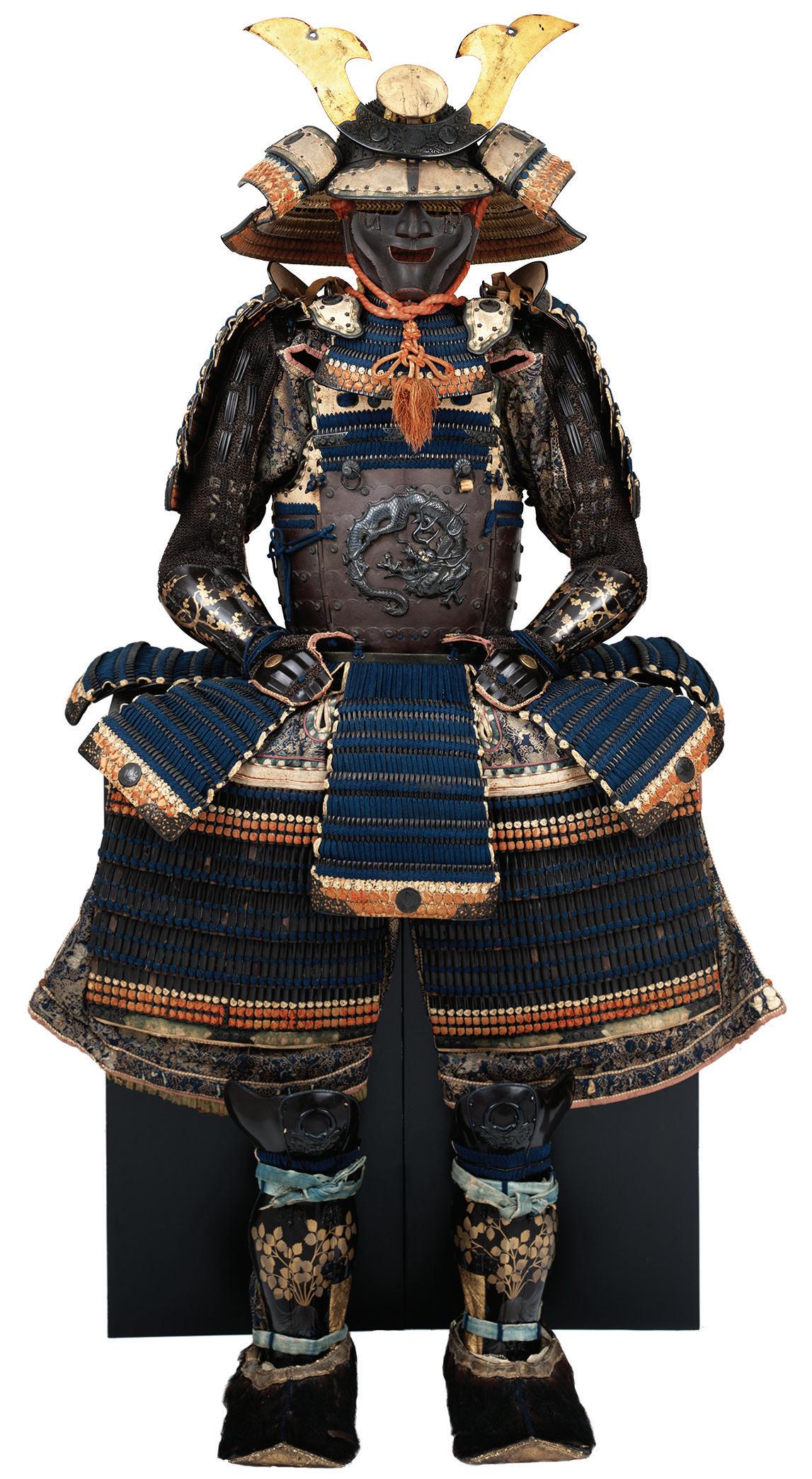
Barnoski noted what draws them personally to the SAMURAI exhibit as its curator might resonate with other visitors, too.
“It’s interesting to me to be from Oklahoma, to be Cherokee and Muskogee (Creek), and find the intersections between these disparate cultures — the warrior culture of samurai versus the warrior culture of the Plains and Prairie people here,” says Barnoski, who is also the Assistant Curator for Native Art at the Philbrook.
Barnoski believes there are similarities between the ceremonial aspects of many Native tribes and the samurai, especially surrounding regalia, what warriors wear, and the power those objects hold.
“For many Native people, what you’re wearing is embedded with the prayers of your ancestors, the prayers that people are making for you so you have good intentions on your life; you’re safe as you move forward. And that’s no different than some of these objects [and] with these masters of their craft who are creating these armors.”
In the 5,000 square feet of active gallery space at Philbrook’s SAMURAI exhibit, viewers are offered an intimate and up-close look at objects like kabuto (helmets), mengu (face armor) which includes menpō (masks), yoroi (armor), uma-yoroi (horse armor) and naginata (pole weapons), among many other ceremonial adornments, artifacts and textiles. These masterworks exemplify the ornate artisanship that created the regalia and cultural mythos of the samurai.
Established in the late 12th century, samurai acted as personal retainers or vassals to landowning elites. In this capacity, they acted as stewards and guards to nobles ruling Japan. By the Edo period — the last era in which samurai remained a distinct social class before their abolition due to widespread government and military modernization — peace ruled Japan. The samurai largely held ceremonial and social roles as bureaucrats and officials, as mandated by the ruling government.
The exhibition is organized by theme but has pieces ranging from the Heian period (794-1185) to the Edo period (1603-1868). There are even pieces of armor from the Meiji period (1868-1912), around the time when the samurai were formally abolished.
“As the United States of America, we have a really short understanding of time in a lot of ways. We’ve not been a country for that long, and these objects come from a space with a really long, storied history — a long recorded history,” says Barnoski. “So you’re looking at objects from 972 A.D. up to the mid-20th century and getting to see how these things have evolved over time and how they’re still influencing our contemporary culture.”

Nowhere is that influence more evident than in the work of modern metalsmiths and craftspeople. The Japanese metal technique uchidashi is alive and well in master metal sculptors like Douglas Pryor, who has been honing his craft for the past 20 years. Considering all the armor and metal art he’s seen over his career, he has advice for firsttime viewers of SAMURAI
“When you’re walking through an exhibit like this, I find the most joy in trying to understand what techniques were used to create so many treasures,” says Pryor. “The thing about Japanese armor is it mixes so many different techniques, from really intricate silk work to the types of things that we’re talking about right now with uchidashi to lacquer work, which is just exceptional.”
This concept is epitomized in Pryor’s favorite piece in the exhibit: Kote (sleeves) with Design of Silver Clouds, created in the 1790s from the artist school of Myōchin Munesada.
“They’re probably one of my favorite things in the exhibit, but also because I stumbled upon these online as a younger person. There’s no real parallel that I’ve seen available to English speakers that you can just kind of walk up in the States and check out,” says Pryor. He explained that the piece stands out due to the mixture of multiple techniques and the fact that many of the elements of the design wouldn’t be easily viewable.
“Now, this is just the arm sleeve, right? The actual shoulder guard would go over top of that; most of this would be hidden from view,” says Pryor. “So I kind of love that this amount of sculpture is kind of for the wearer or for the passing glimpse, not even necessarily to be put in the spotlight.”
Ultimately, Pryor is grateful for the privilege of seeing “an exhibit this diverse outside of Japan.”
As he says, “You get to move back and forth between falling in love with the people and the stories and the places that they come from, without necessarily having to go through the effort of learning that language or traveling to those places, which is a wild privilege.”



Throughout the exhibit’s run, the museum will offer a robust educational and community program that provides conversation around the samurai and Japanese culture overall.
Community events such as curator-guided tours, the art of bonsai, paper lantern creation and samurai-related children’s storytimes are just some of the offerings from the Philbrook, with more added throughout the exhibit’s run. Enthusiastic SAMURAI fans can also pick up the exhibit’s catalogue from the gift shop so they can remember their favorites.
Plus, to add context to SAMURAI, Philbrook also exhibits Japonisme: New Perspectives from the Land of the Rising Sun in the former American Galleries through Aug. 3. Japonisme, a French term for the popularity and influence of Japanese culture in the West after Japan opened its borders for trade, is an exhibit largely sourced from Philbrook’s collection to run in tandem with SAMURAI
“So beyond just the Helmerich Gallery, the upstairs galleries will be activated as well,” says Barnoski. “It’s taking all the work from our collection, including some historic screens and paintings, and evaluating the impact of Japanese culture on a history of art.”
A standout piece in Japonisme is Lilla Cabot Perry’s “The Gold Screen” from 1912, which the museum acquired in 2022. Perry was a preeminent Impressionist painter who was influenced by Japan, continuing an artistic conversation between both cultures.
Thanks to the Philbrook and Ann and Gabriel Barbier-Mueller Museum, that global conversation about the samurai and Japanese culture is continued to this day, allowing audiences to understand not just these master works but also the real humans who once wore them.
“I think there’s also something really important about the idea of honor and justice and beauty and care, that’s so embedded in this culture and in the samurai armor,” says Barnoski. “So I feel like they’re beyond fascination — there’s respect there.” •

We're a company built on creativity, craftsmanship, and a commitment to transforming the spaces where you live, relax, and entertain. Whether you’re dreaming of custom deck services, elegant pergola services, or upgrading to a premium kitchen & outdoor living space in Norman, OK, we’ve got the expertise and vision to bring it all to life. At Deckworks, we also add that extra spark—literally. As a trusted lighting services company, we can illuminate your outdoor spaces with tailored designs that enhance safety and showcase your property’s beauty after dark. Discover how Deckworks can transform your home today.

























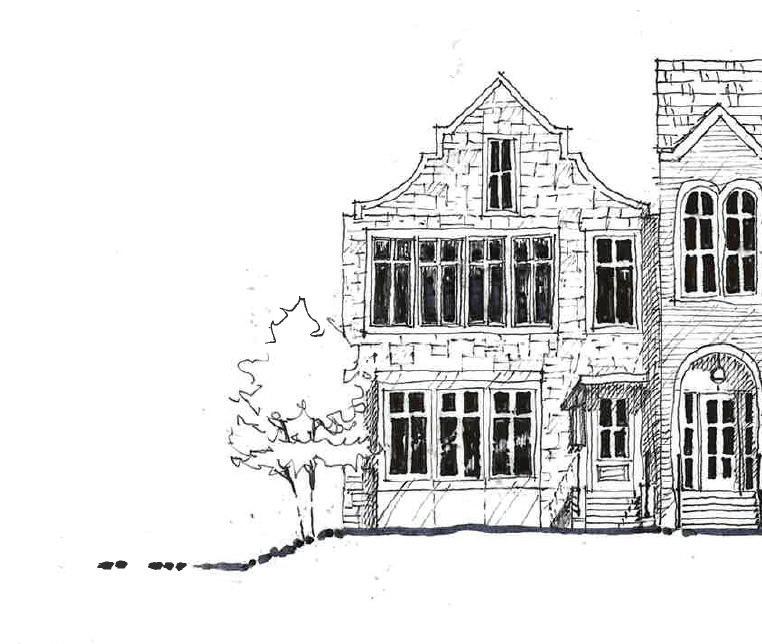














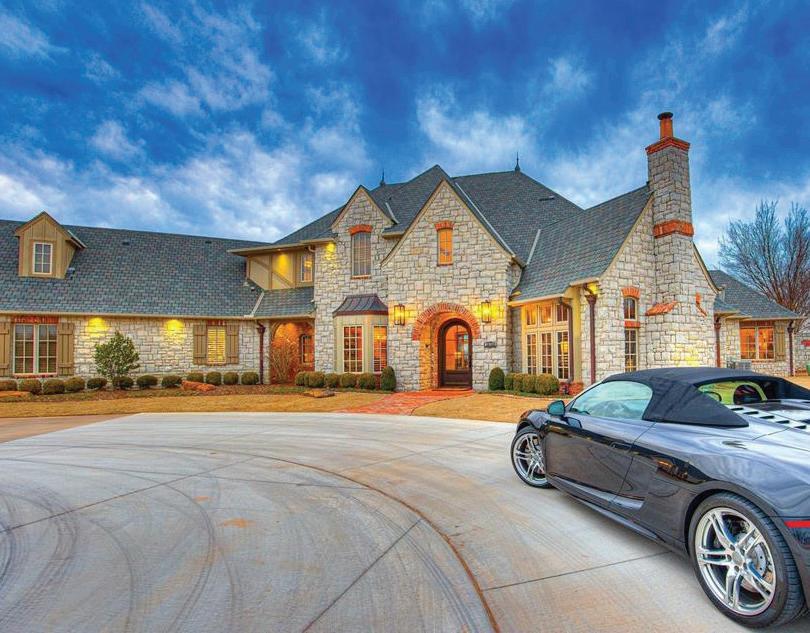


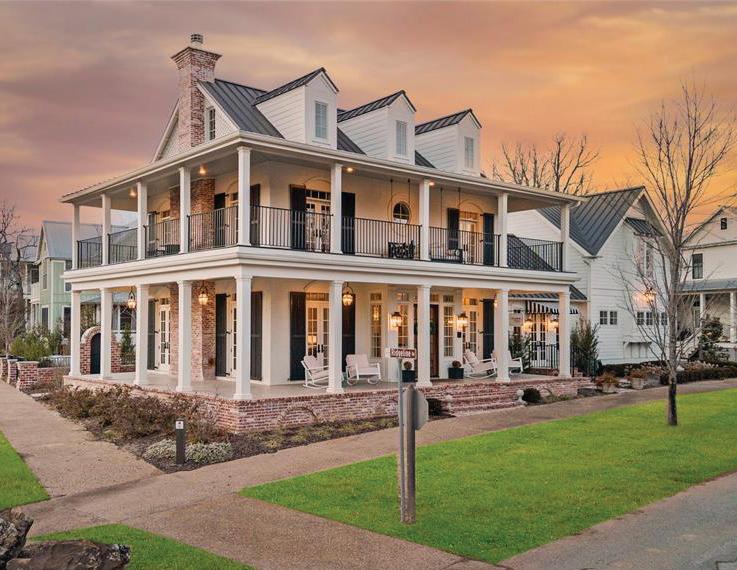




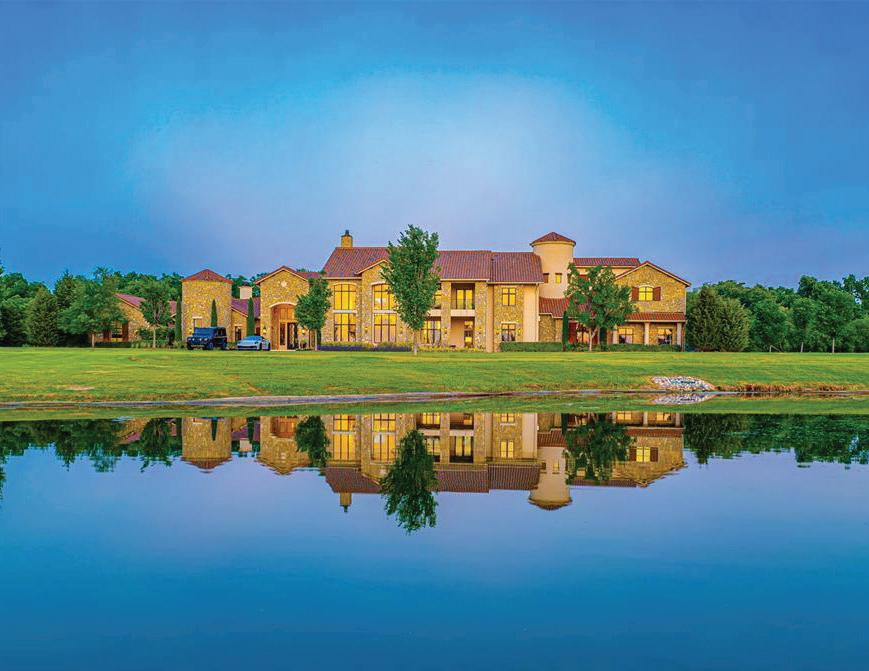




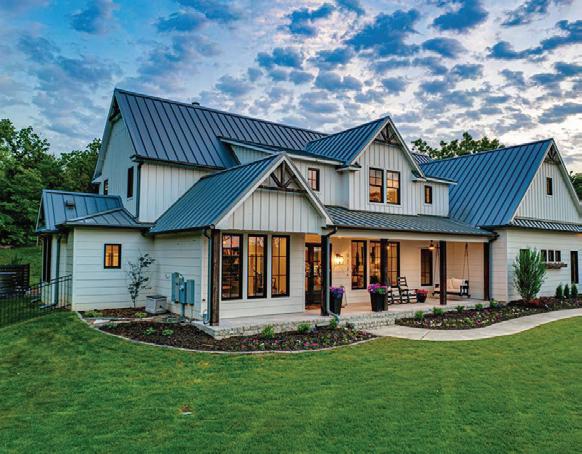
$1,595,000 |





































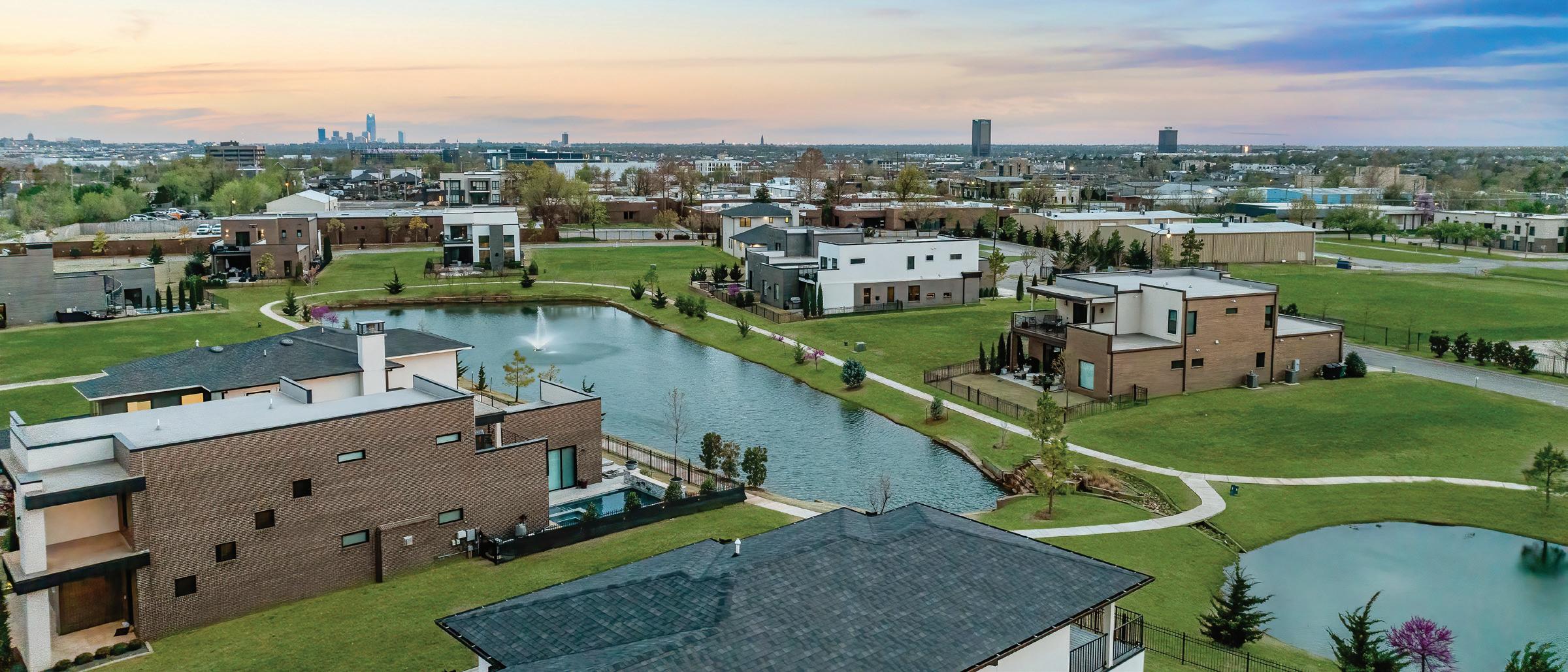




is a unique and picturesque community nestled on a rare expanse of land in Northwest Norman. With its gently rolling hills, mature trees, and serene lakes, this exceptional neighborhood offers the perfect balance of natural beauty and refined living. Through the gated entrance, you’ll be greeted by elegant homes surrounded by lush landscapes and peaceful vistas. Every detail of this community is thoughtfully crafted to offer an unparalleled living experience, providing a serene environment where elegance and nature come together.
VILLA LOTS STARTING AT $175,000 WITH A MINIMUM OF 2,700 SF
1/2+ ACRE ESTATE LOTS STARTING AT $300,000





GoodRidge Roofing
GoodRidge Roofing delivers expert craftsmanship and reliable service to Norman, Oklahoma and nearby areas.
Led by Brent Swift, with 27+ years in roofing, construction, and real estate, we're built on trust and quality. From repairs to full installations, our experienced team provides durable, top-tier roofing solutions that protect your property and investment for years to come.
Enviroshake
A leader in the synthetic roofing industry, Enviroshake engineers and manufactures premium composite roofing tiles that authentically replicate the natural look of cedar and slate. Our proprietary composite blend is a mixture of sustainable materials designed to create products that are not only classically beautiful, but also unbeatably durable, safe, and long-lasting.







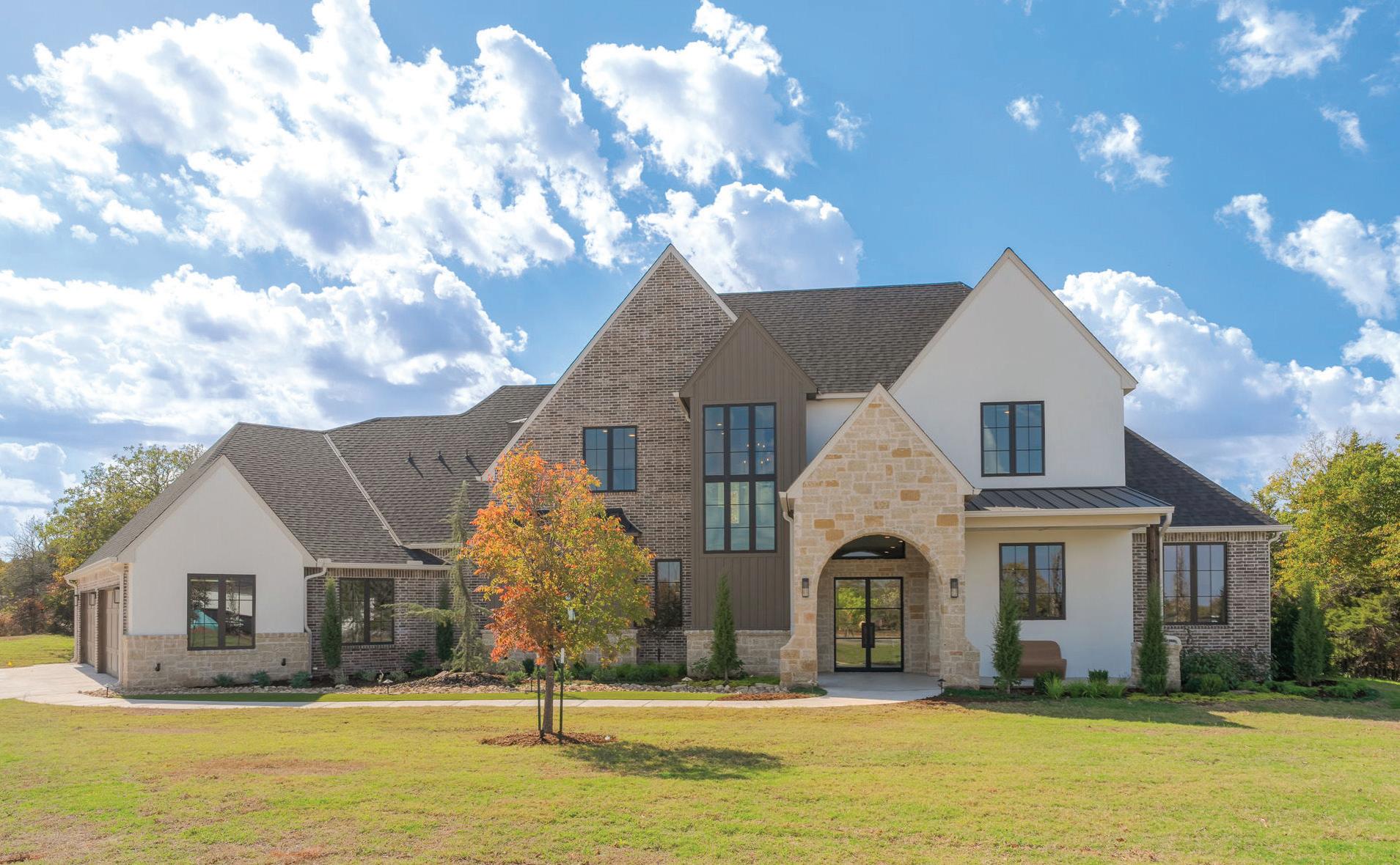

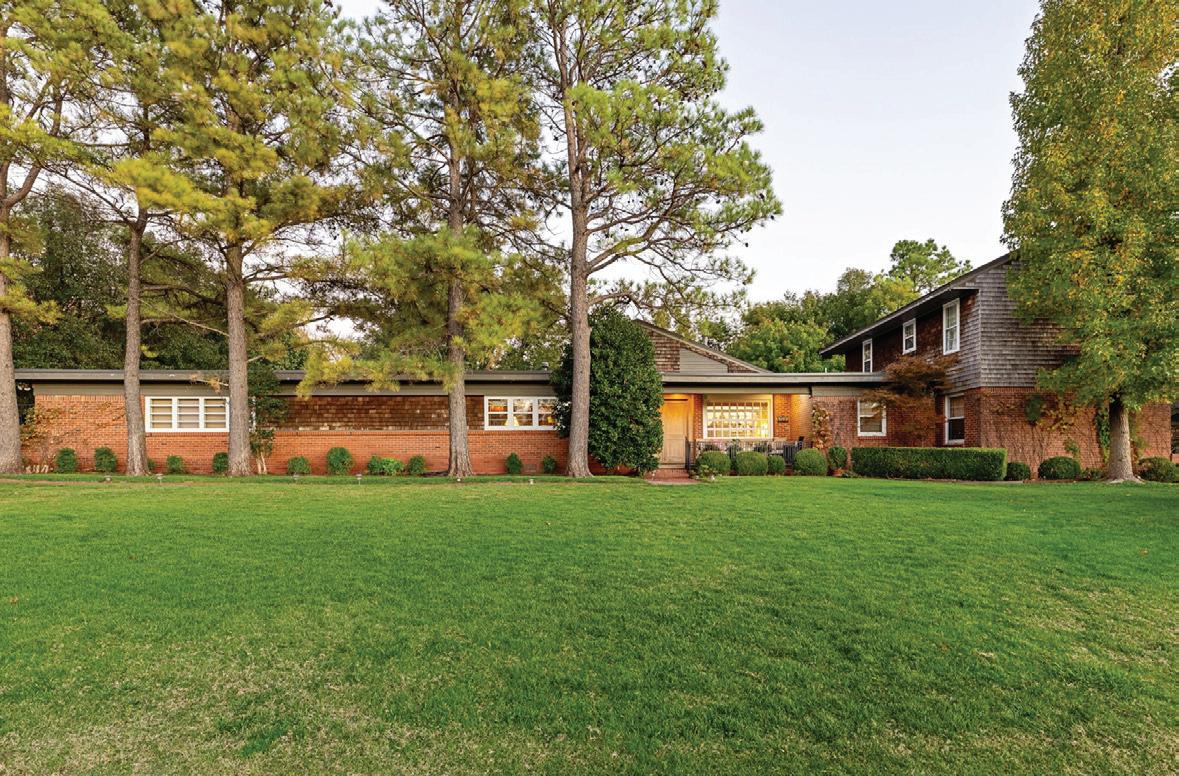
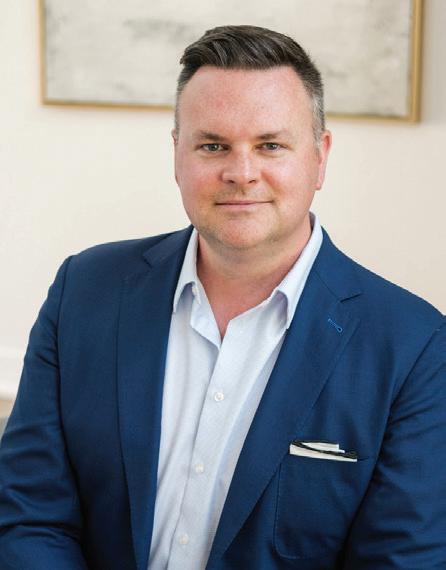

With a distinguished career spanning over 30 years, Tracy has firmly positioned herself among the top 1% of elite professionals in Oklahoma. Her expertise shines in luxury new construction as well as the buying and selling of existing homes, with all clients receiving the ultimate experience. Tracy is recognized for her understanding of diverse market conditions and strategic guidance that drives successful outcomes.

























